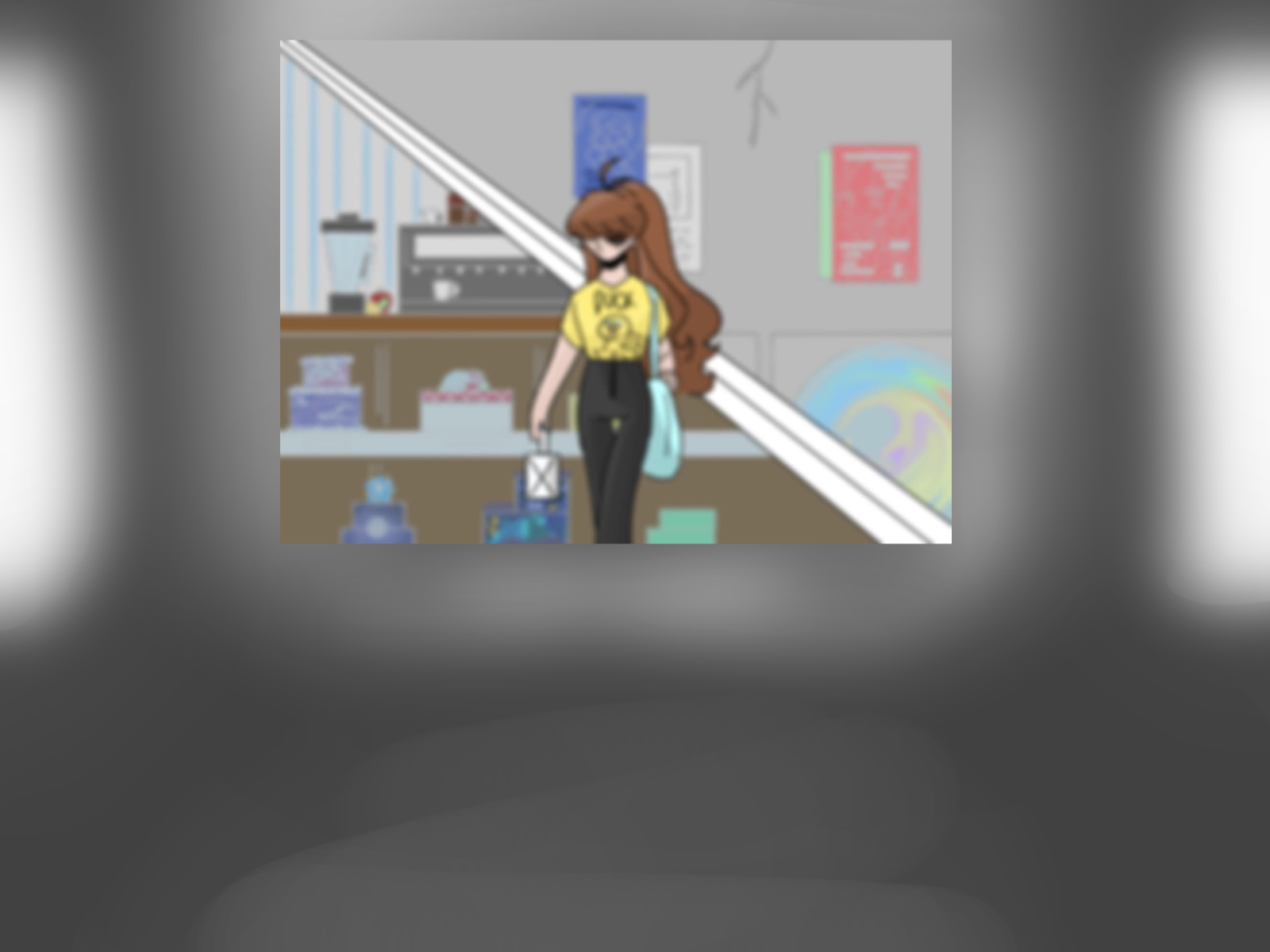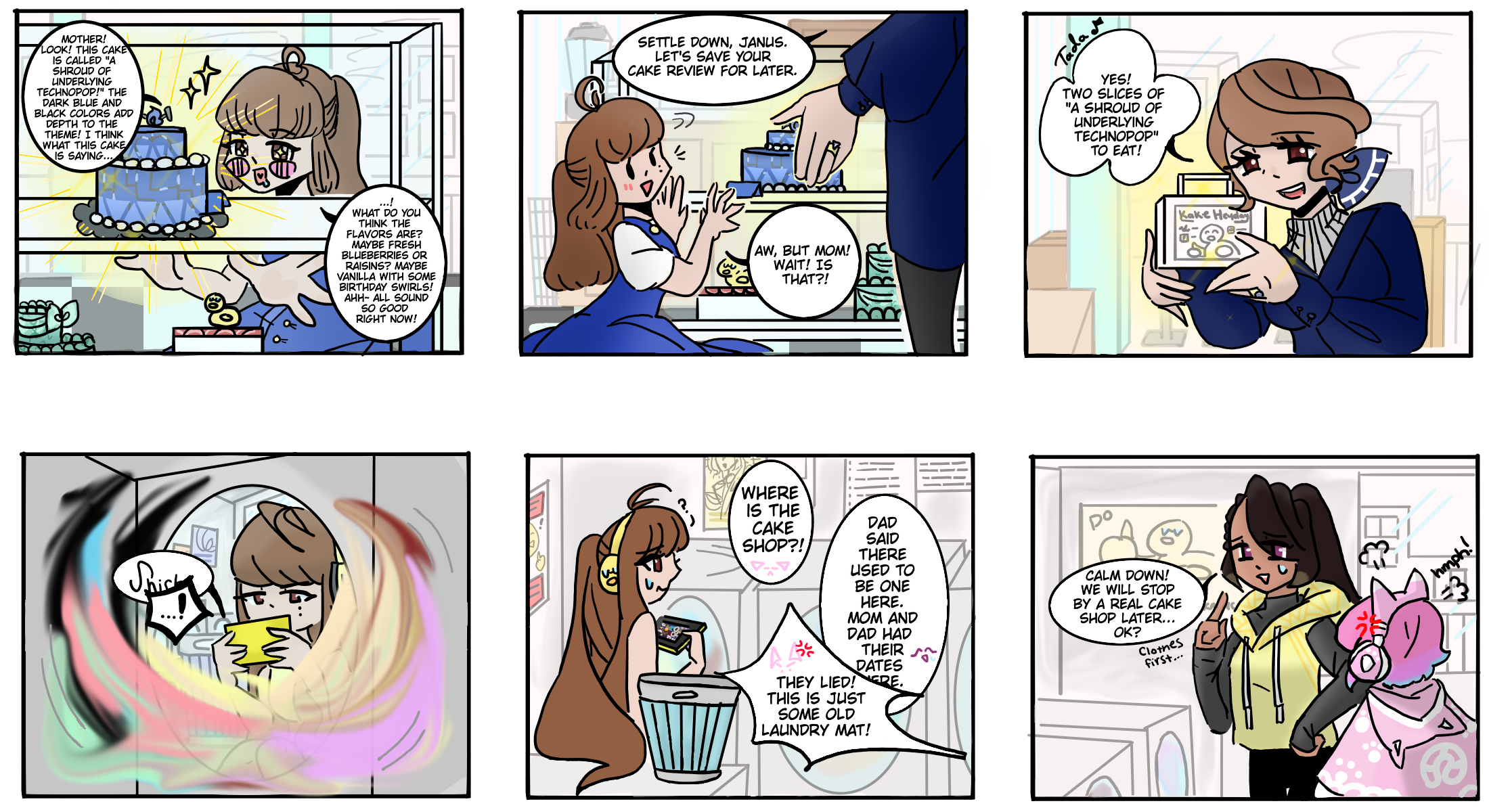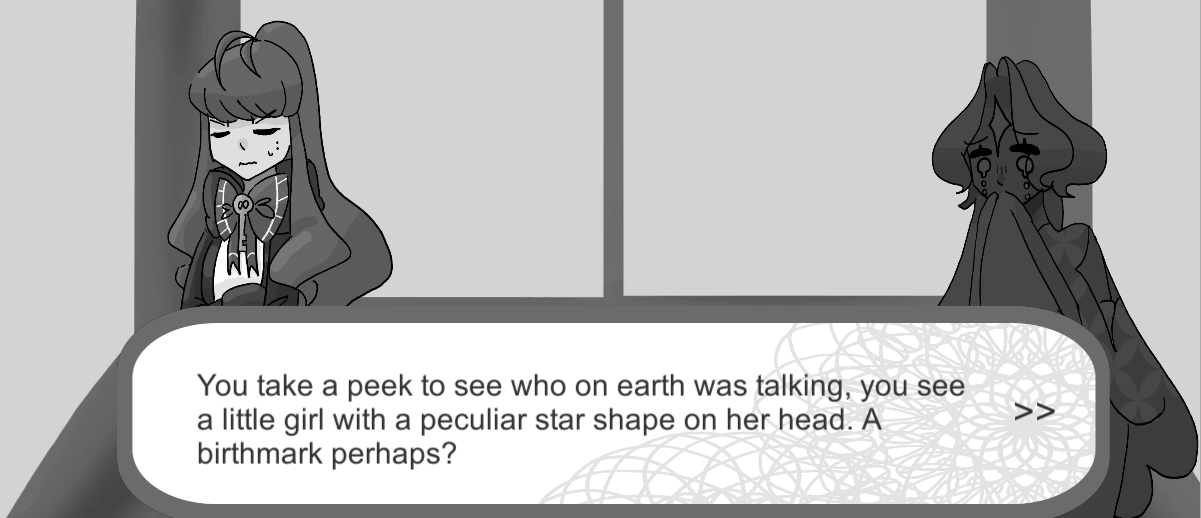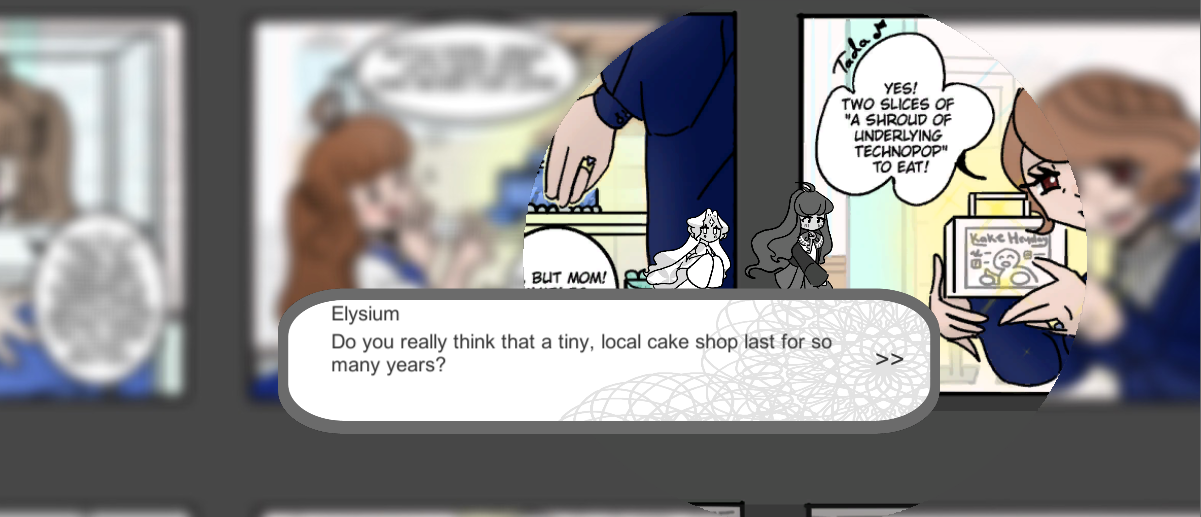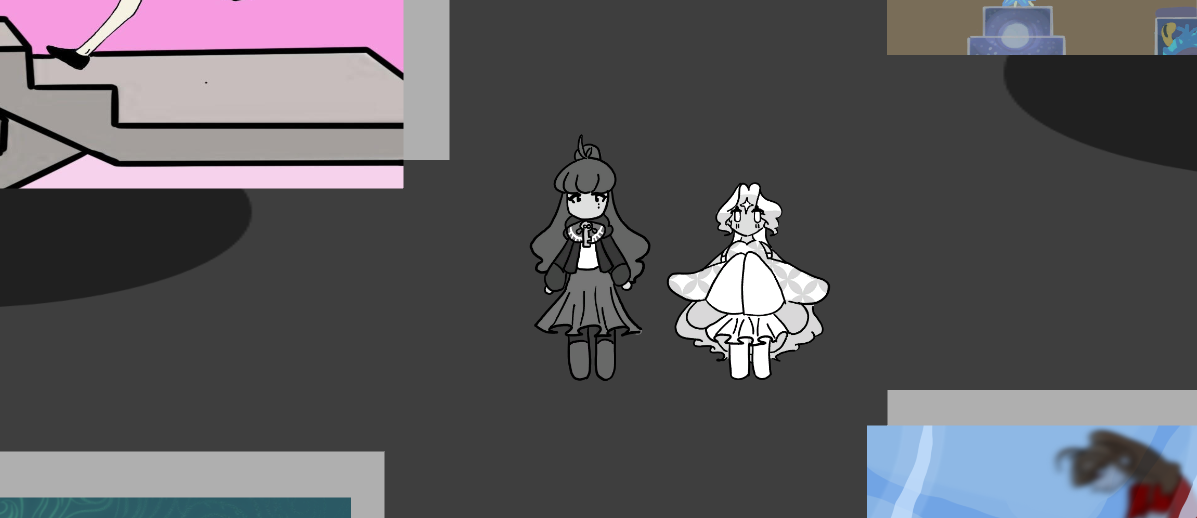


These works below consist of Unity games that include a certain character named Elysium. She is a goddess of a
made up world, but in one case represented time itself.
Her signature mark is a star that can be called a "diamond star" or "compass star" that signifies her guidance in
the games she is in as the sage archetype character.
Her carefree attitude is the front she wears as she already seen and experienced what most people have not,
carefully predicting and viewing the future as time
progresses.
Her inspiration comes from the goddess characters that guide people in stories and games.
Elysium slowly became my
poster child who I care for deeply which is the reason for her integration in many games.
For more
technical skills (i.e. HTML, CSS, VR, Blender) check out my other
projects!
Set in medieval times, the only way to have wishes granted was to go to the cathedral with an offering and
pray for the goddess' blessing. The main character,
Alphonse, rushes to the cathedral after hearing his mother got sick due to a recent thunderstorm. On the
way, he meets up with his sister, Elise, who found
a good way to gather money to buy some offerings. Along the way, they notice something a miss, there was
clearly something going on beneath the shadows of
the land.
2D platformer, Role Playing Game
Elysium is the base for so many of the other games in the series. Below are some examples that helped mold the rest.
The biggest trouble for me was creating a dialog system that could be adapted to more than what the base dialog it was given. I wanted to create a secret route where players would have to go through several random Elise lines before she gives up and allows them to go into a secret route. The base is based on Brackeys' dialog video and I worked out the rest of the functionality with the help of extremely supportive people in GIMM. This helped me understand arrays a lot better, and make a stronger base for future dialog purposes.
This was my first time trying to add enemies to the game and I quickly saw a problem where my enemies would flood my scene, which in the long run was not good for the game. To reduce the count of enemies I made it so that they would disappear once they get off screen and hit a visible barrier that acted as a wall. Now, I know there are other methods to make them disappear, like deleting them once they reach a certain distance, so I have more solutions under my belt for next time.
Although I couldn't get my shop function working to the point it recorded what purchases I made, Zyger's code combined with mine helped me combine two different methods together, my dialog system and my shop system. This way, I can signify when the player bought something and a reaction from the shopkeepers if they do not have enough money. That was enough work that had to be done for this section.
This is the first time I tried digital art, so you can see the varying styles between this game and the two other listed. I'm pretty fine at drawing profile models that goes into the cutscenes, but my biggest struggle may be the mini models that is actually used in gameplay. Every mini model presented in the game was at least drawn twice while cutscene models generally never get redrawn after passing the first draft. Here is an example with Elise, the protagonist's sister.
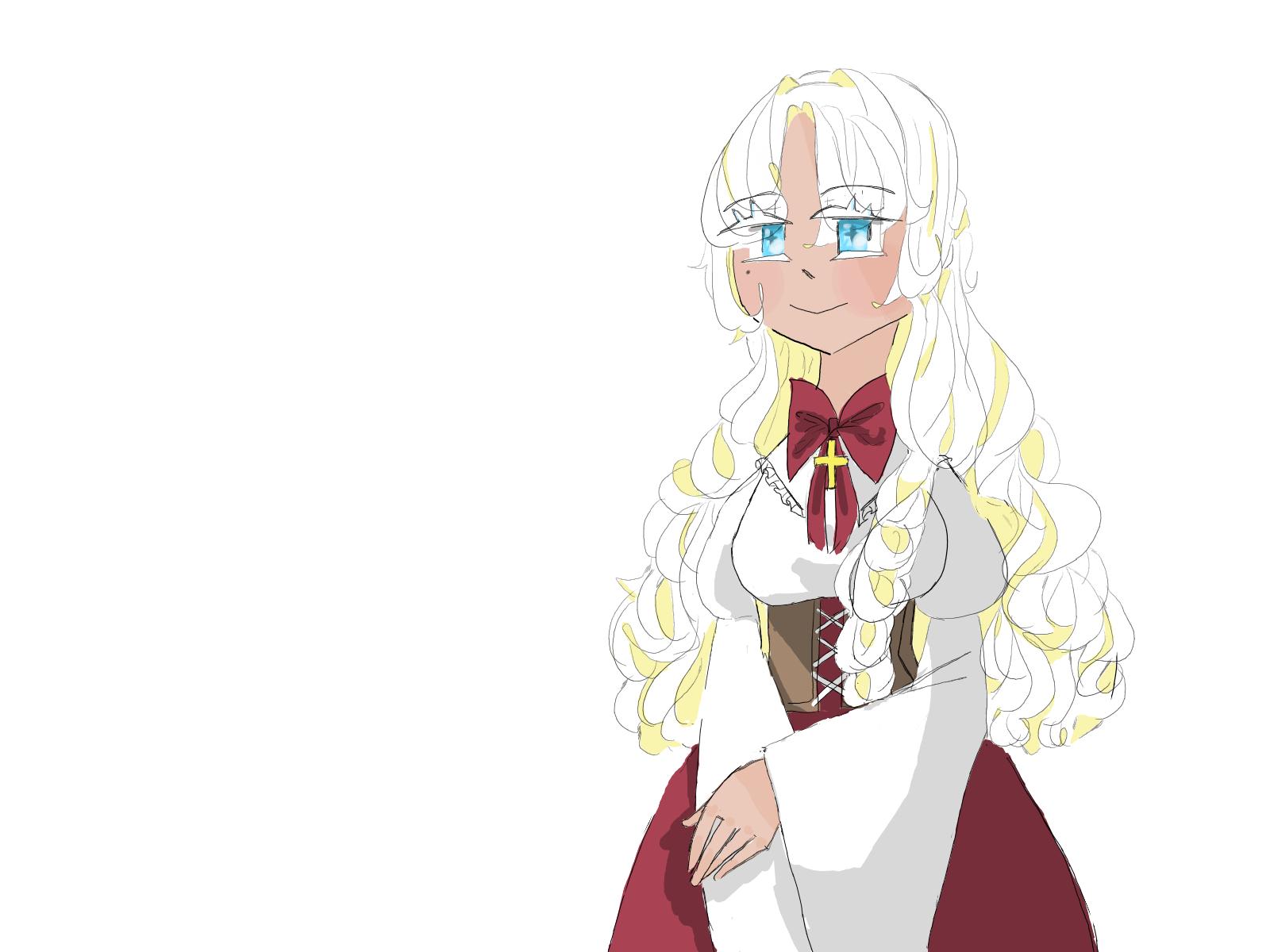
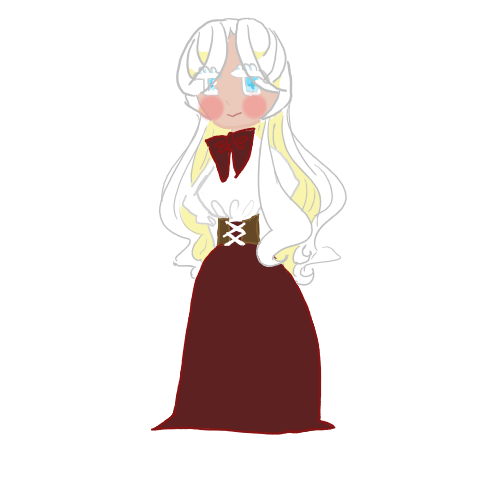
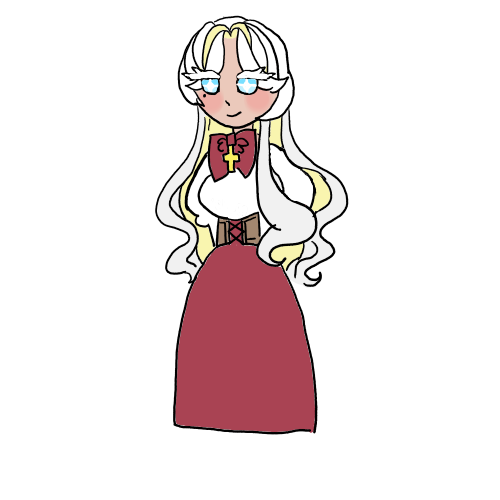
As the early game models, they unfortunatly have poor lineart, shading, and plain designs. The first and second game in the Elysium series did not come with character models mainly due to the fact that I always drafted their profile model first and then called it a day. Bad move as an artist, though I am slowly learning and improving from that fact. Here are some art from the game in action.
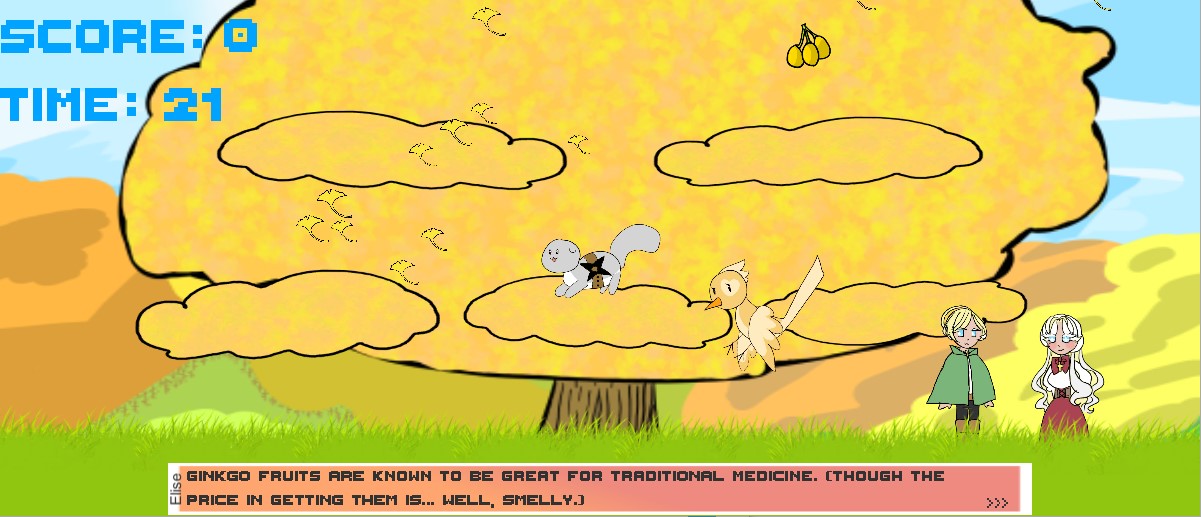
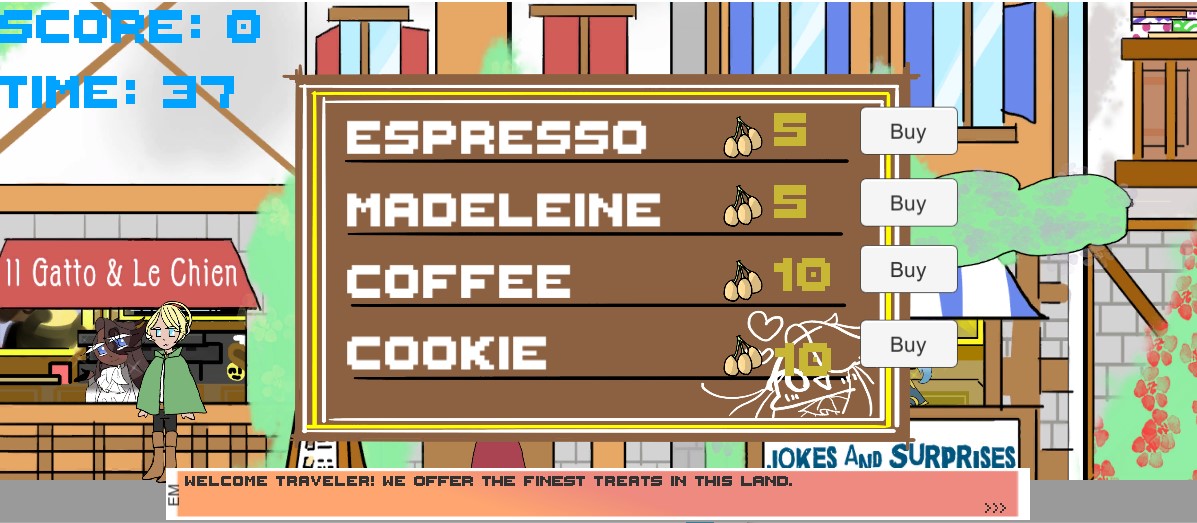
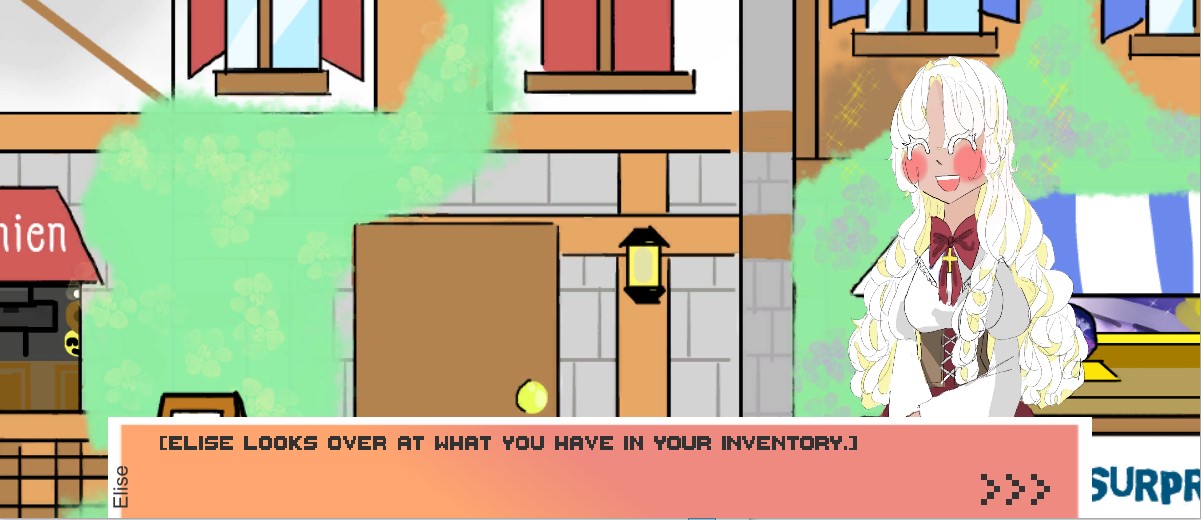
Following the storyline of Cinderella of 1950, The game starts out with a comic strip explaining that a
grand ball was announced and Cinderella can come only if she cleans the house.
The next comic strip describes how she was banned from going, in which her fairy godmother saves the day.
Although, with a limit on the time she can
spend at the ball. The final comic strip relays the aftermath of the game.
Augmentative
Reality (AR), 2D platformer, Role Playing Game
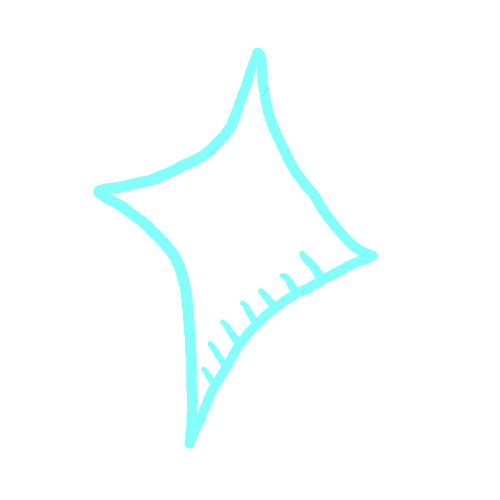
The code is done in collaboration with my other teammates. Here is two that I worked on, the door system for the House playable scene and the character movement script in relationship with the joy-con that we had to use. Otherwise, the scripts that have been used were all referenced from our first games in the degree. We had to work to make sure our code can work with Vuforia, an AR add-on.
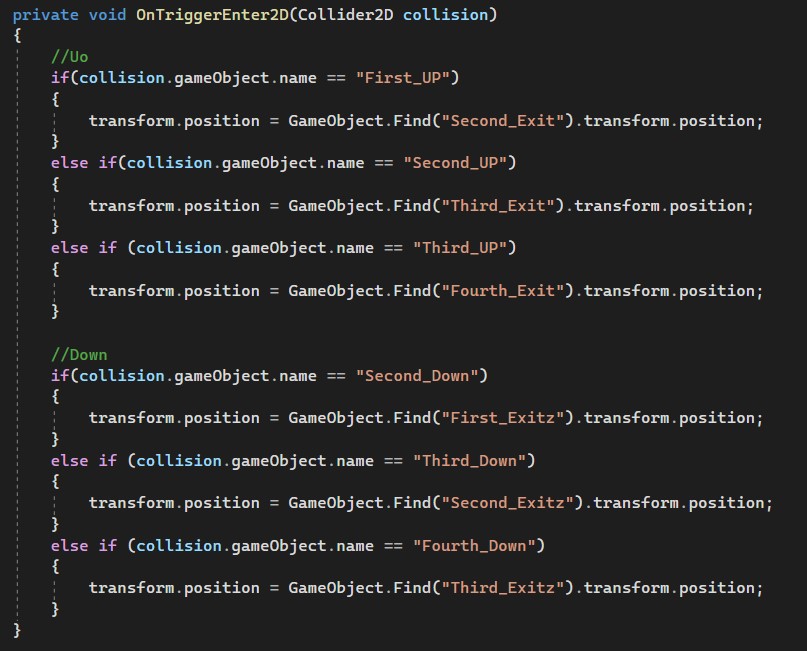
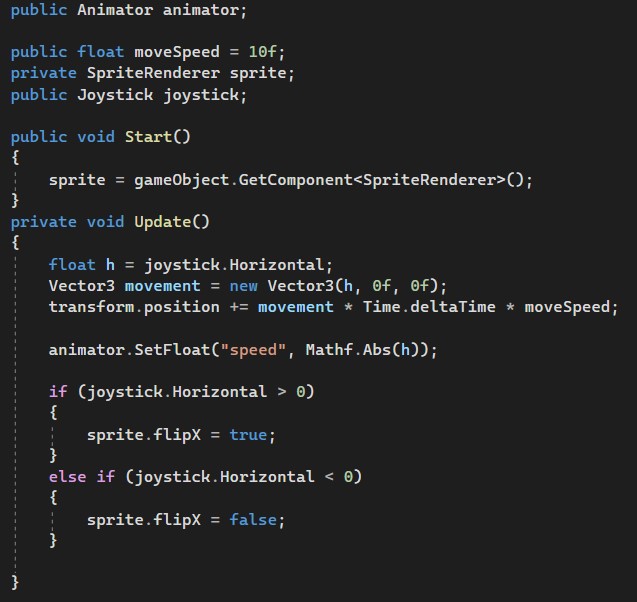
I was the main artist for this group project and unfortunatly, out of the two other games listed on this page, this game might have the most unused assets. This is due to the fact that this was the first time my team was working with Augmentative Reality and we had to do trial and error to see the limitations of what 2D art can do in the space. For example, I really wanted to add a visual novel aspect which is common in most of the games I made so far, however, asking the player to touch a button that isn't physically there can take some time especially when they are looking through a small screen like a phone. This discovery was very last minute which soon impacted the quality of art that I was producing.
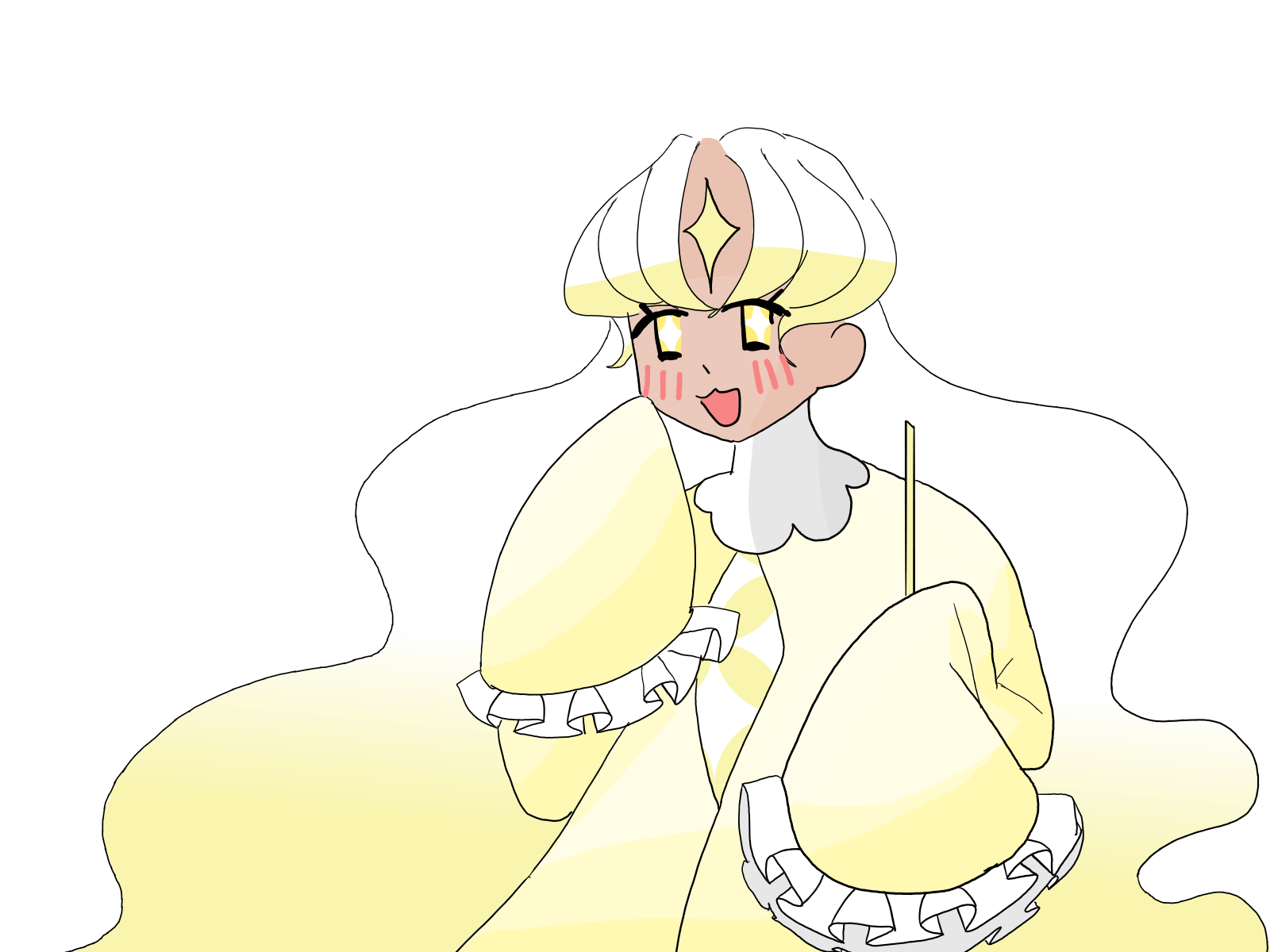
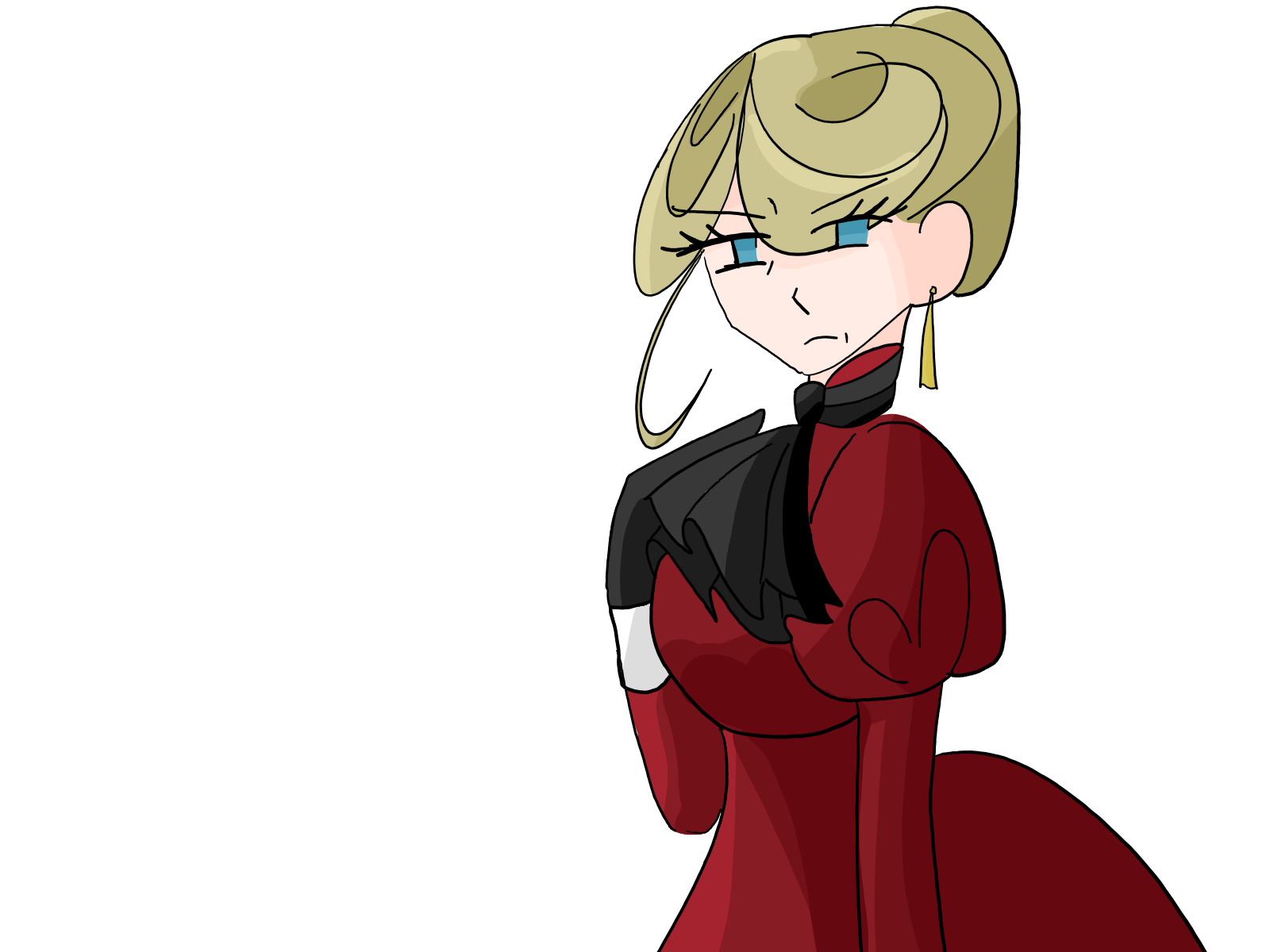
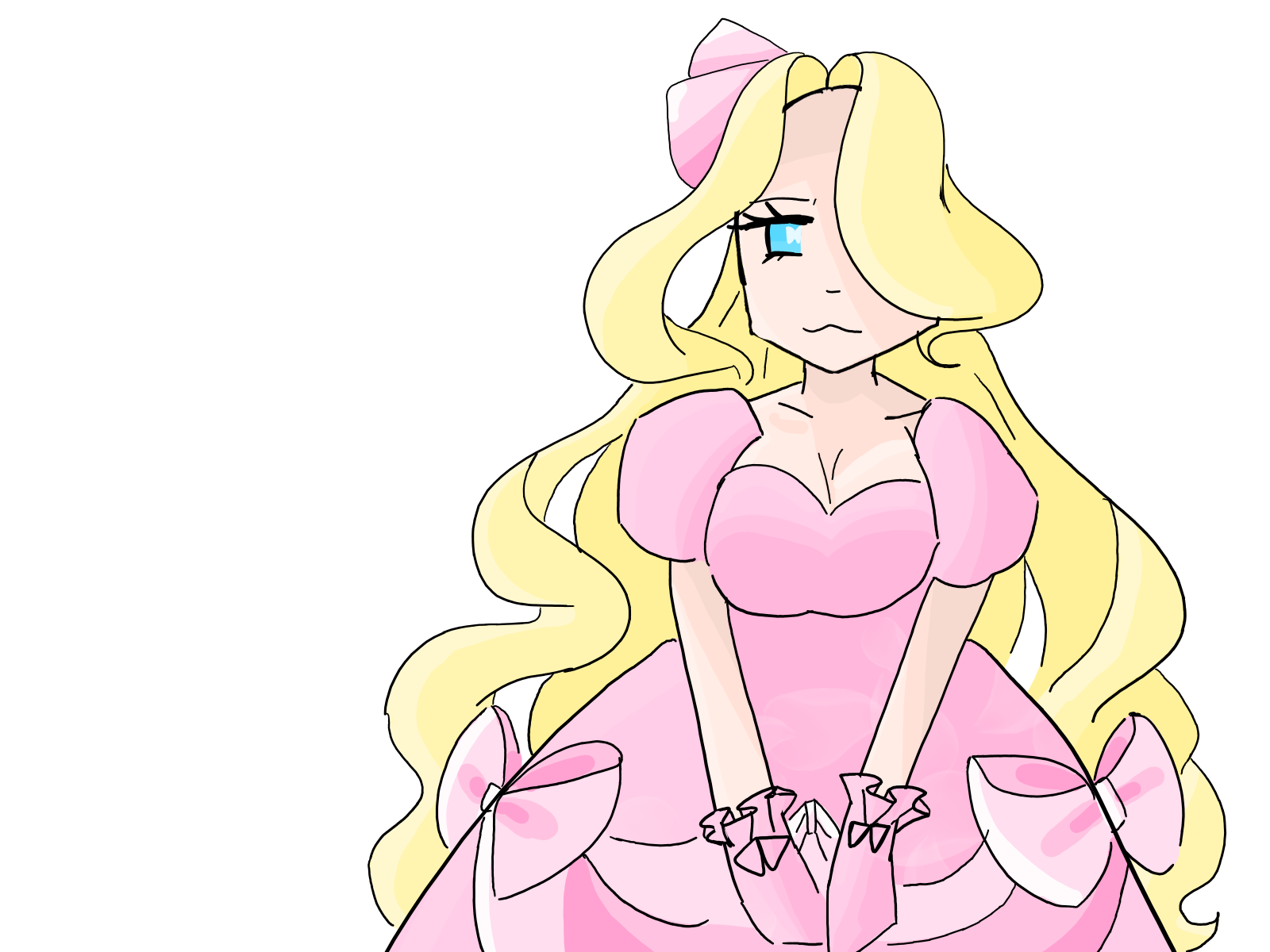
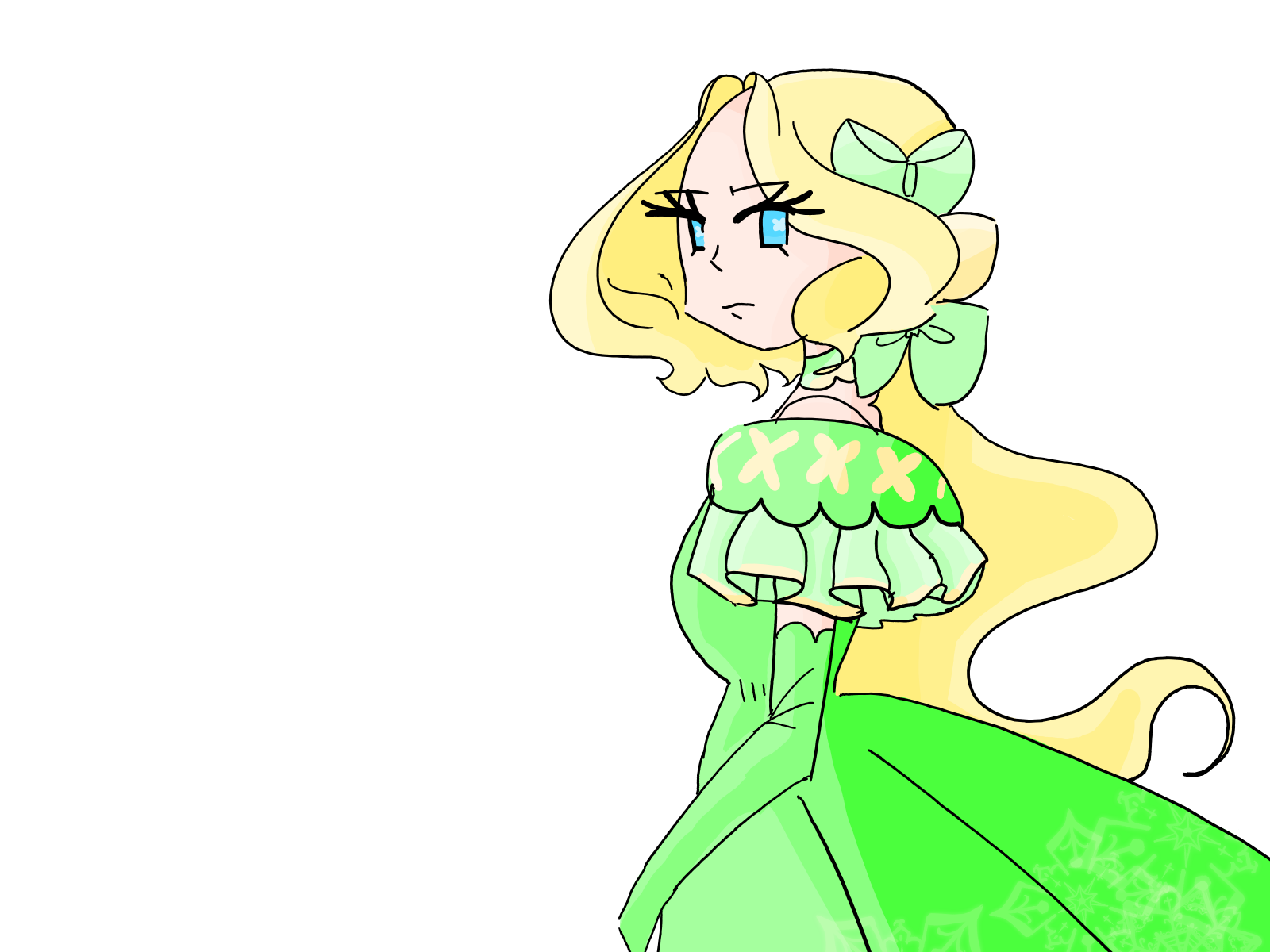
To fix the problem of the visual novel aspect and still tell the story of Cinderella, we decided to go with comic strips instead. Thus, the player just need to watch the comic strip slideshow and then start the game once the timer for the comic ends. Each chapter (connected to the AR trigger) has three panels total with the exception of chapter 3 which has four to have an impactful animation to conclude the game.
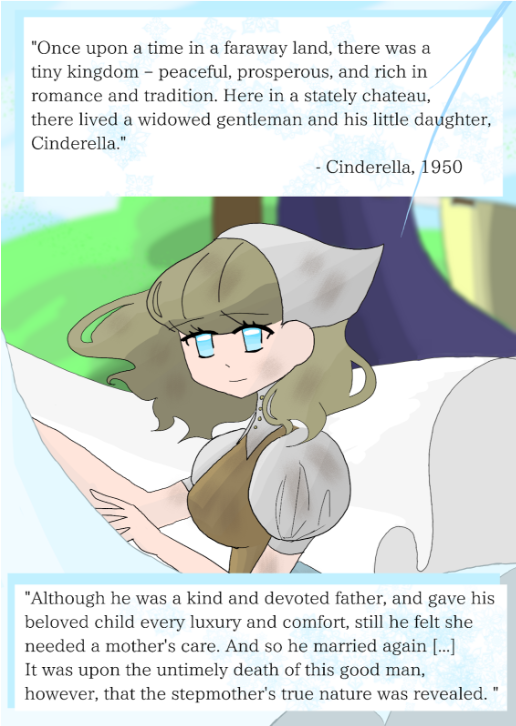
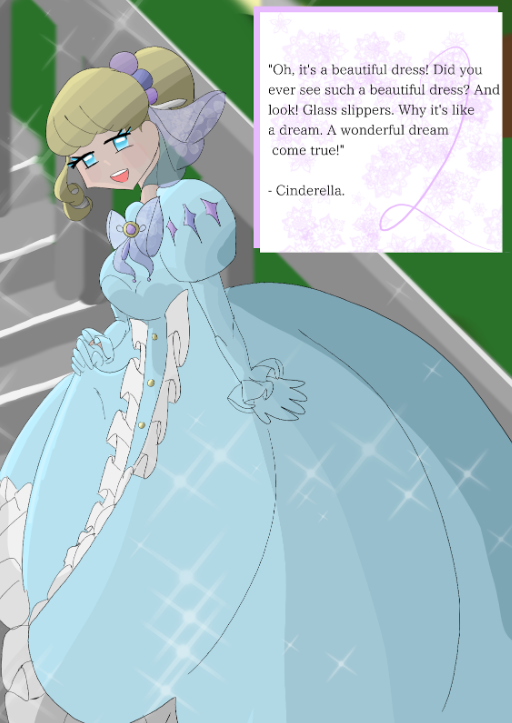
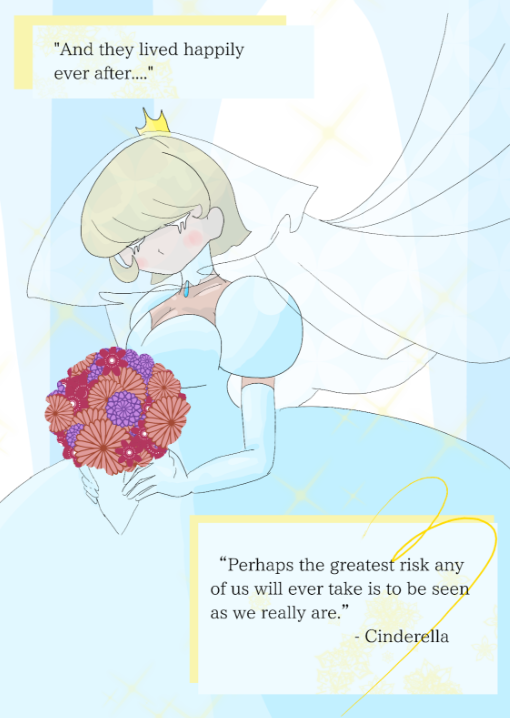
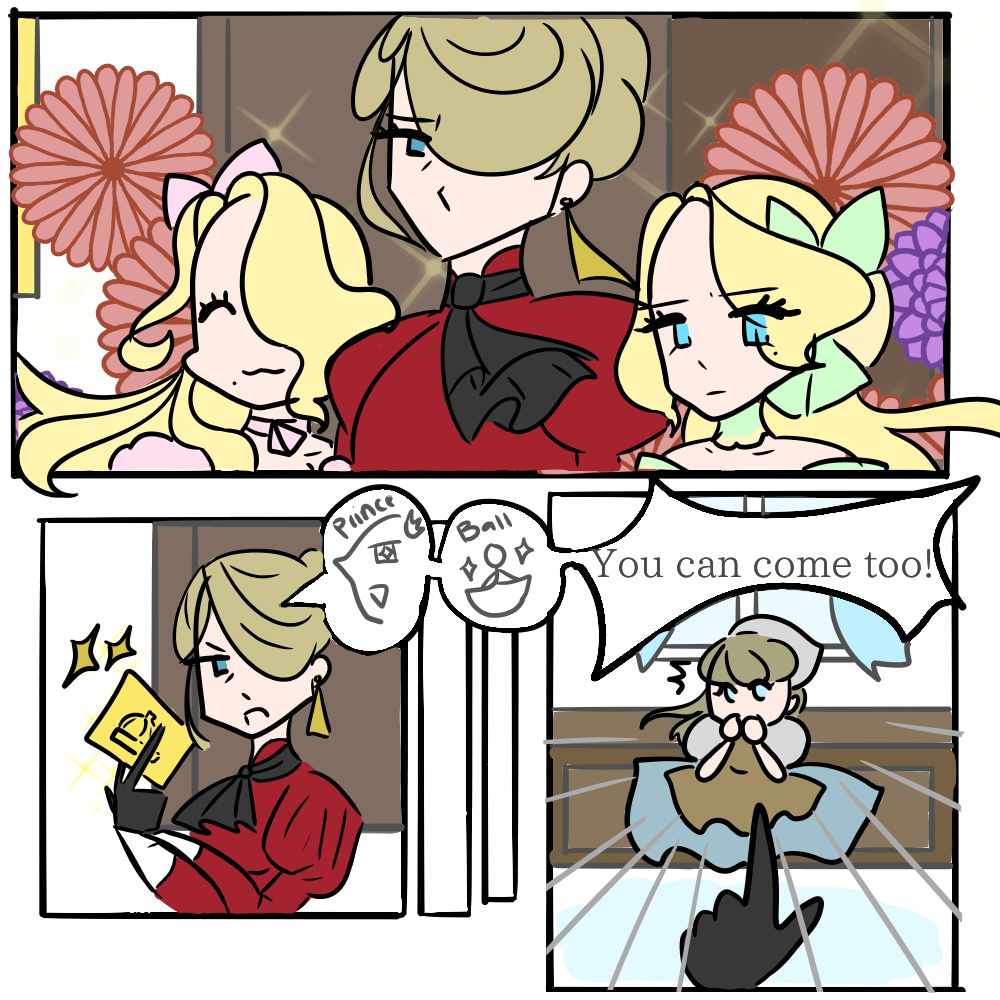
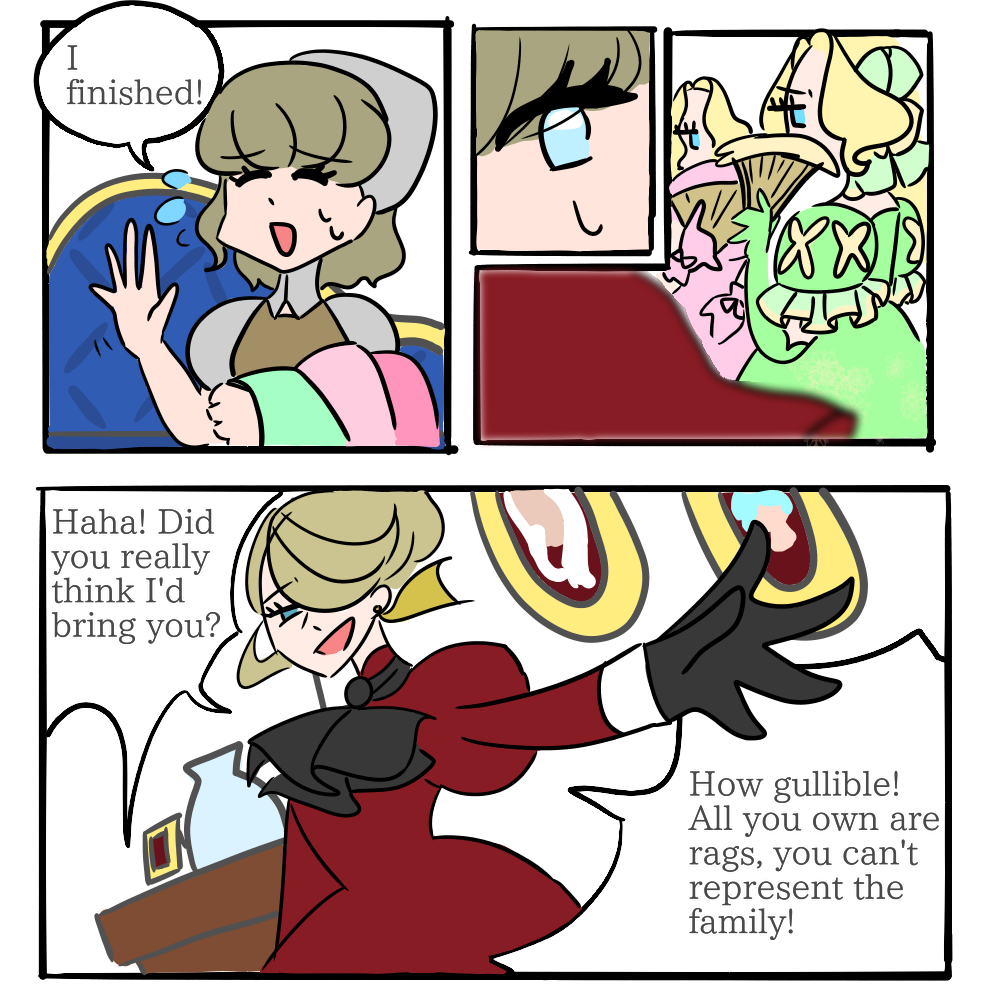
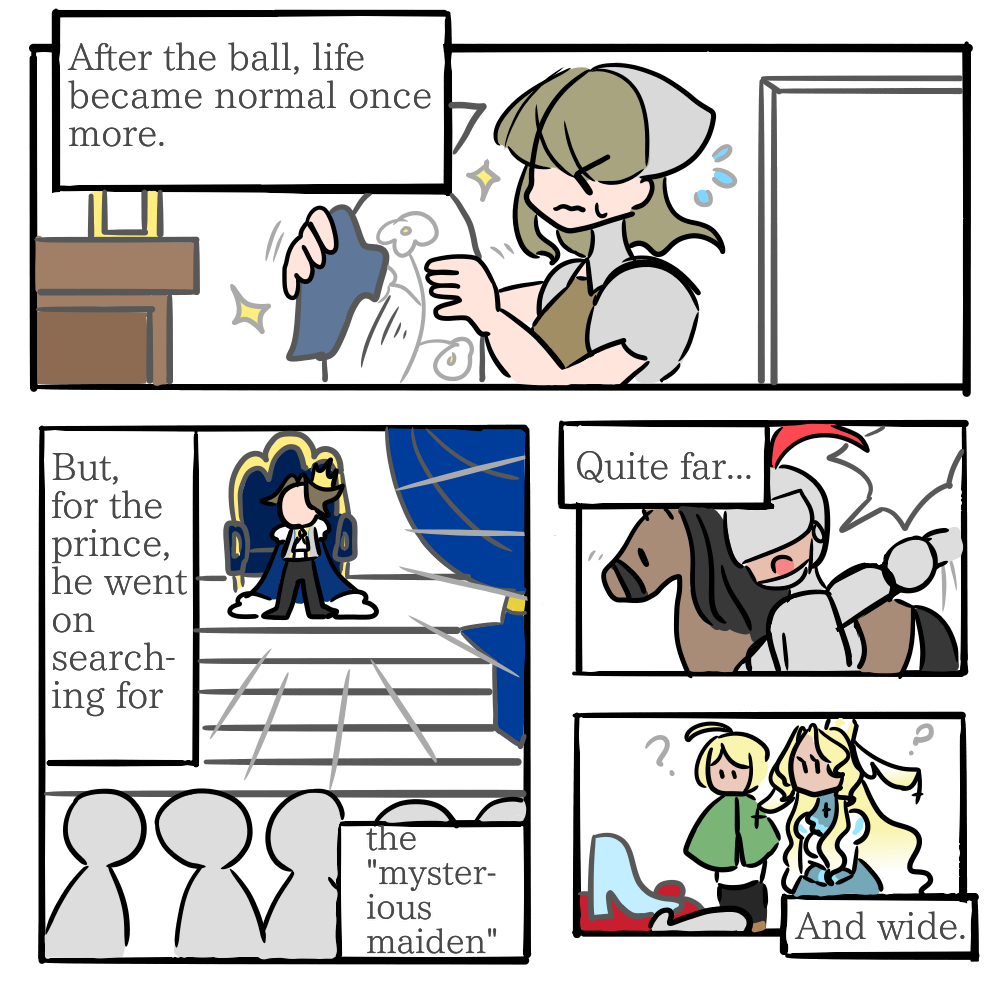
It was important that the players don't think the game scene was bland, so I took extra steps to help create an immersive experience with background decoration which can be viewed in the scene. Below you can see furniture and the castle's exterior which is present in their own scenes. Since it is an AR game, screenshot quality will not be used due to it being pixelated. However, you can view a gameplay video of Cinderella AR above.
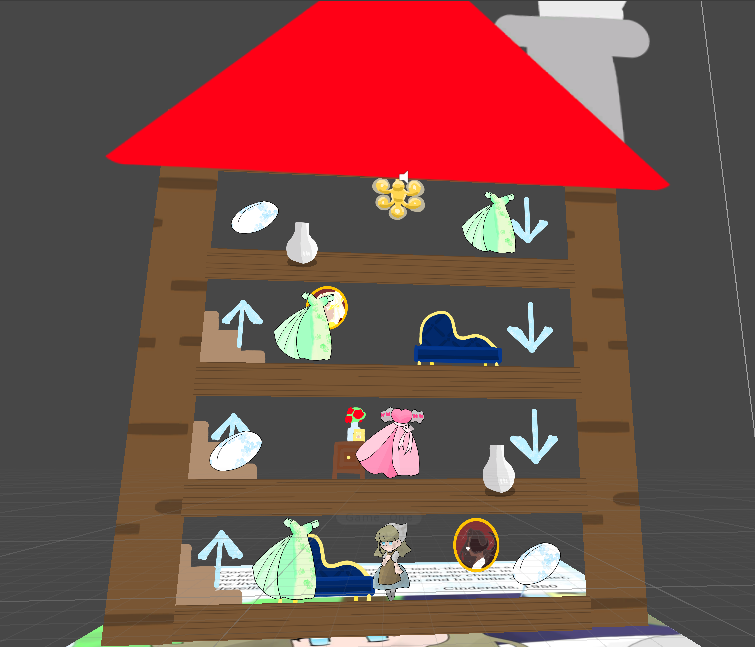
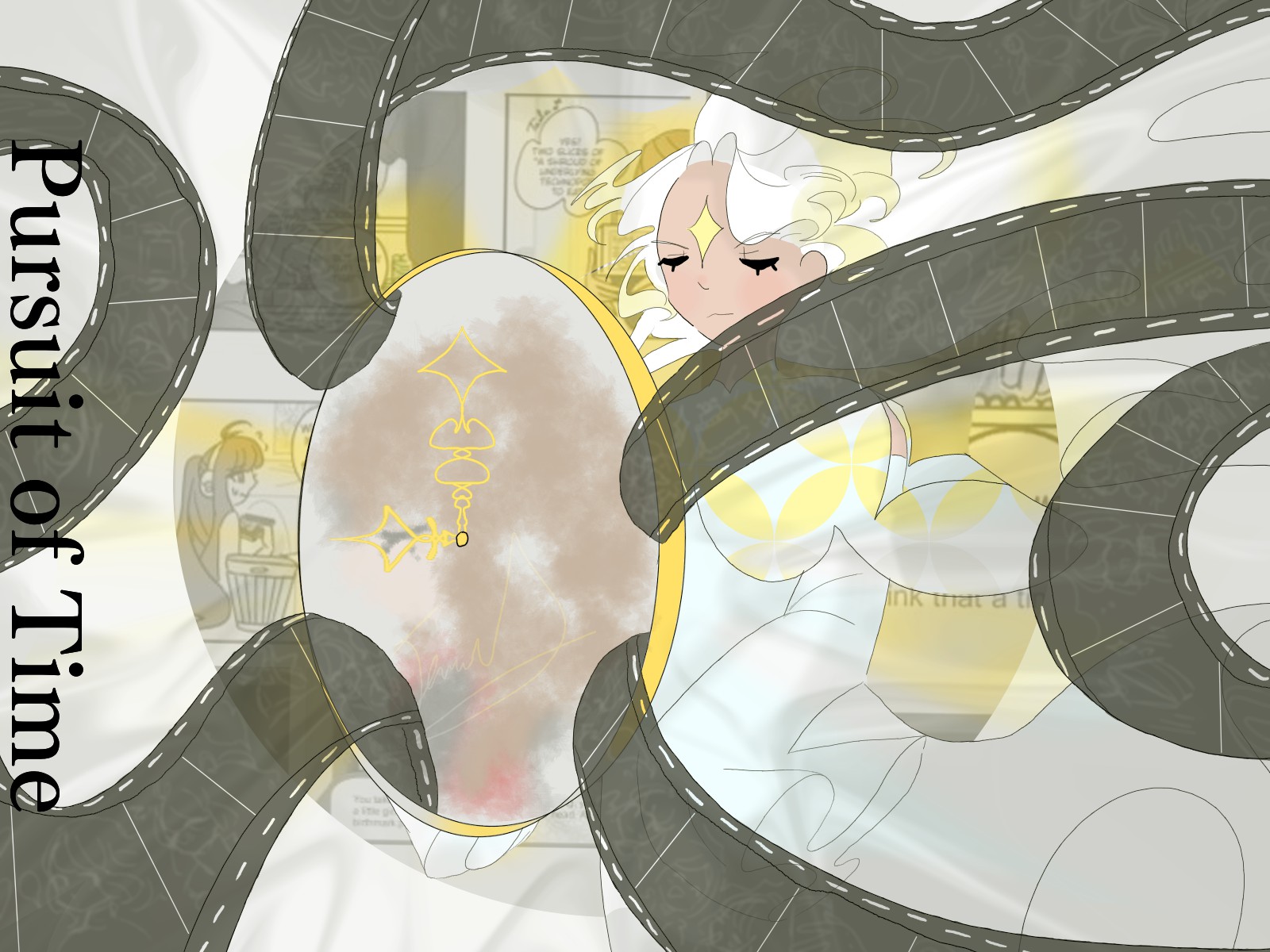
What is time? This game follows the story of Janus, who can't help but dwell in the past and worry for the
future. In a certain accident, Janus meets a
girl named Elysium, who claims to control the passage of time. Elysium takes her to the mirror chamber
where Janus views her past and her future, and
reflects on what it means to her present day life.
2D, Role Playing Game
Due to some music used being restricted to Youtube viewing only, please use this link to see the demo.
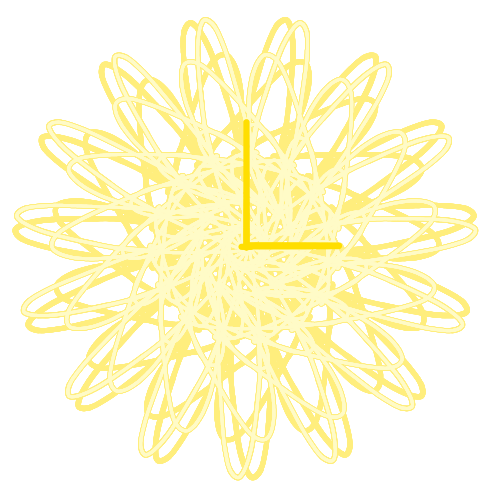
I did the majority, if not all the coding present in this game. A lot of them, like dialog, interactions, and visual novel aspects, were all referenced from the original game, Elysium. There was a few new things I experienced with this new type of play style like 2D movement using up and down as well as using a global data manager to check off if the player did a certain requirement before they can reach the endgame or add in replayability. Overall, coding the game was not too terrible because most of the grunt work and mistakes were made with Elysium, all that was left for me was to do heavy beta testing and recruiting other people to try it and adjust based on the feedback.
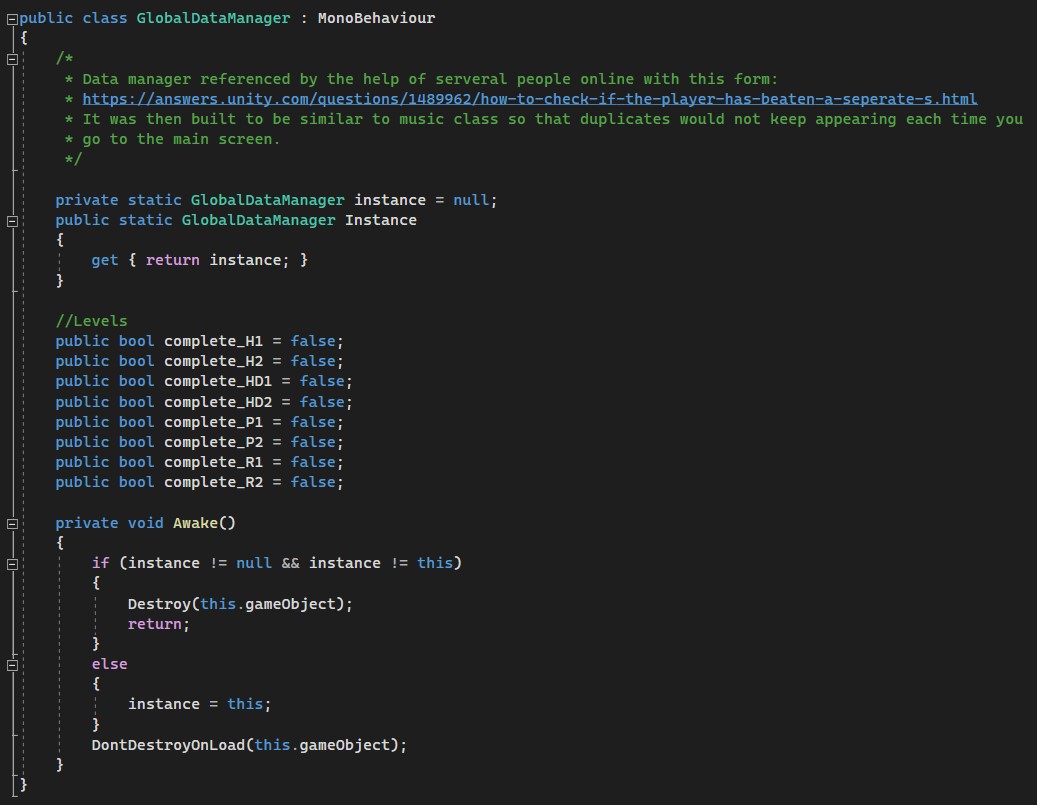
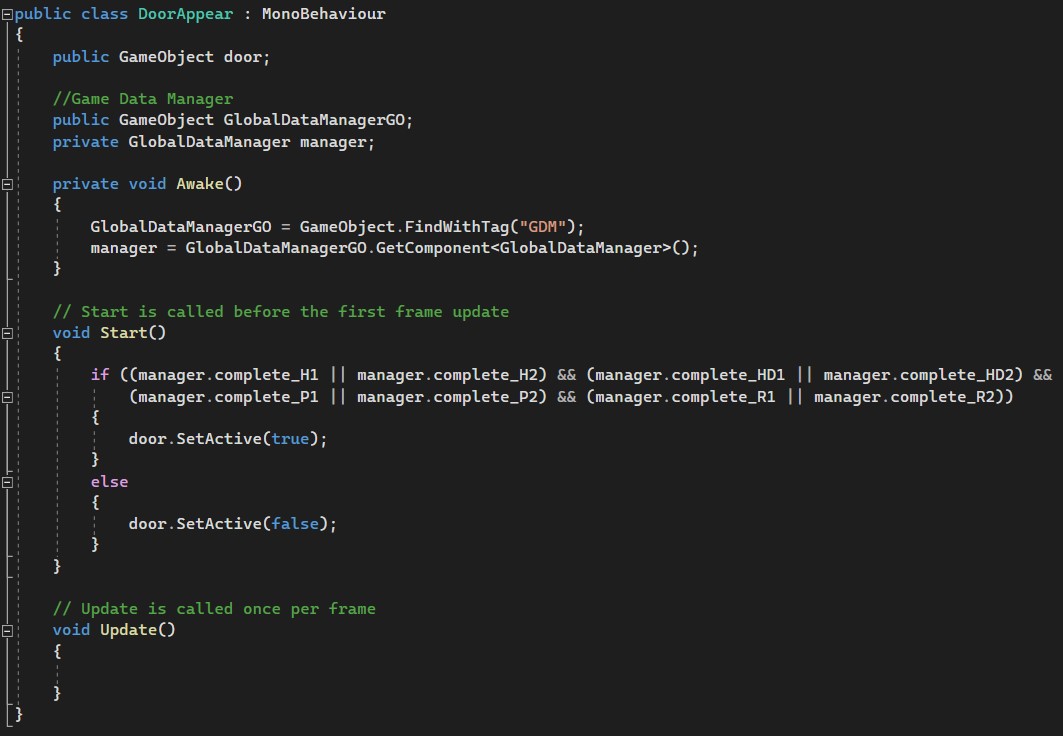
I have received a lot of feedback from both my beta testers and my teammates. While the majority is grammar and general dialog issues, I have made some key steps to improvement.
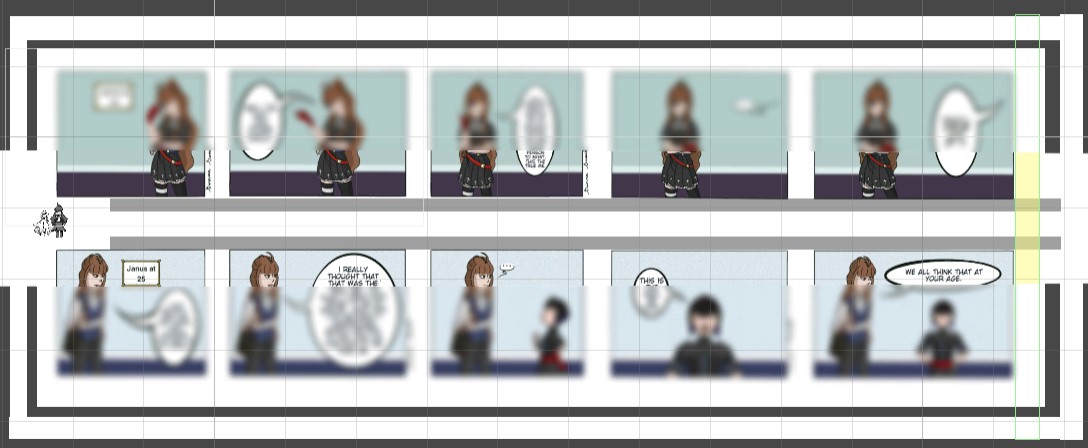
One example is related to the comics. The comics used to be free roaming-- but reading the comic out of order seemed like a chronological error, especially with the dialog for each comic. Thus, we added barriers. The first type for the comic scenes had it so you had to run back, but with feedback, I changed it so that there was a teleporter at the end that brings you to the start.
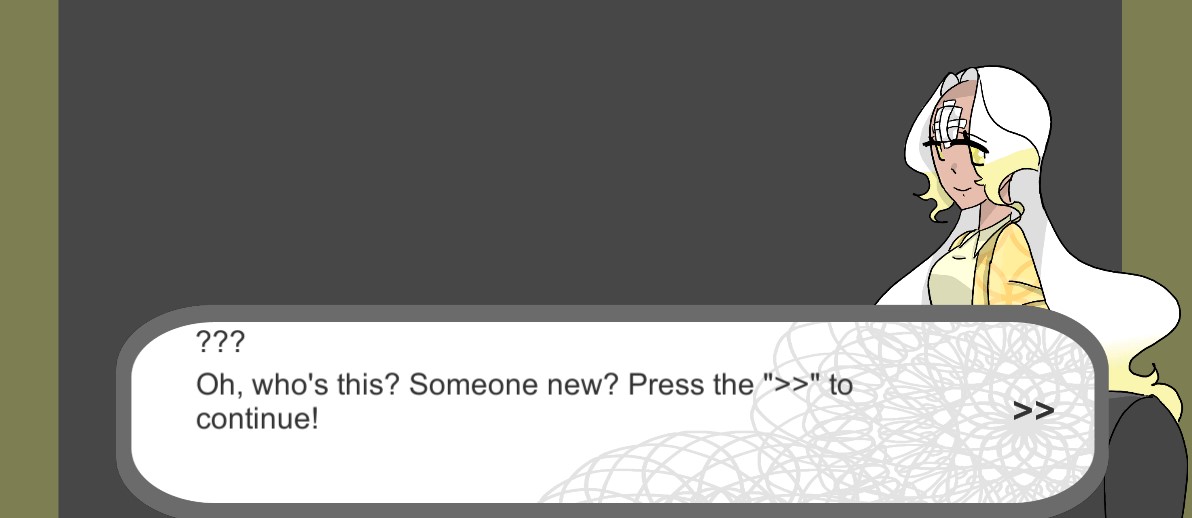
Another problem I ran into was the fact that some people don't know what a visual novel is, and therefore more hesitant to play the game. I made a tutorial to address this and introduce some of the gameplay mechanics.
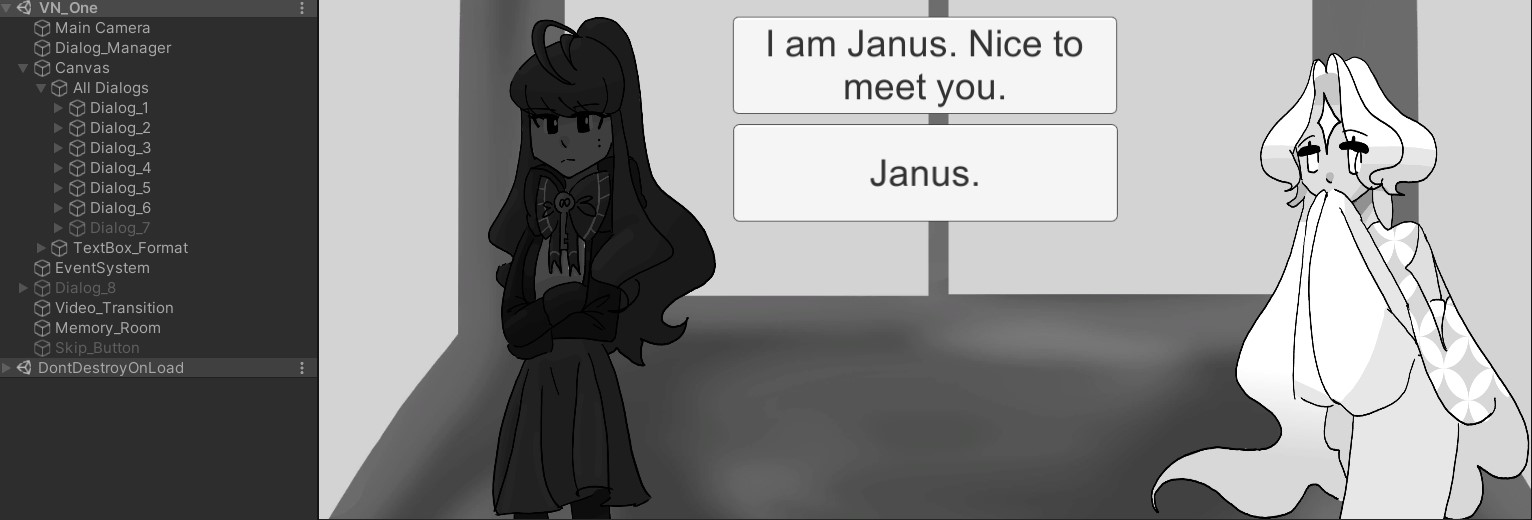
The other feedback change I made is a direct improvement from Elysium where I group dialogs rather then make a new scene for each option. This made it so I didn't have to shift through 100 scenes to find a specific dialog I needed to change.
In the Pursuit of Time, I did most of the early concept art for this game and the main art in the game. When my team and I got the concept of time, we wanted to find a way to address it. Our first concept was to create an adventure game where Janus was going to school when time started getting distorted. The original goal was to collect the key to resume time and on the way, she sees reflections of her past which makes her think about her present and future life. The original concept art and characters were designed by me, although the game's concept transitioned later due to the complexity of ideas coming in.
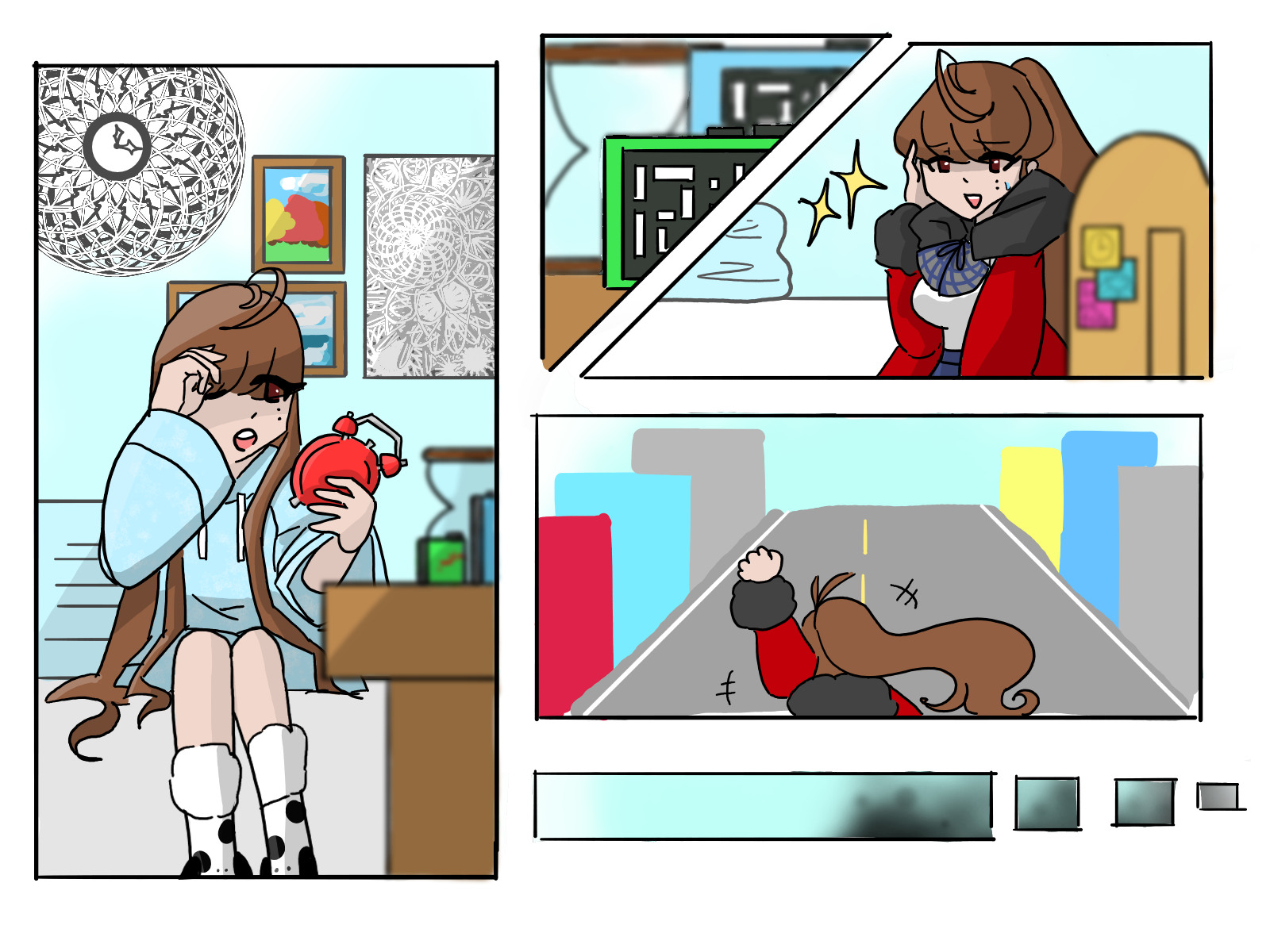
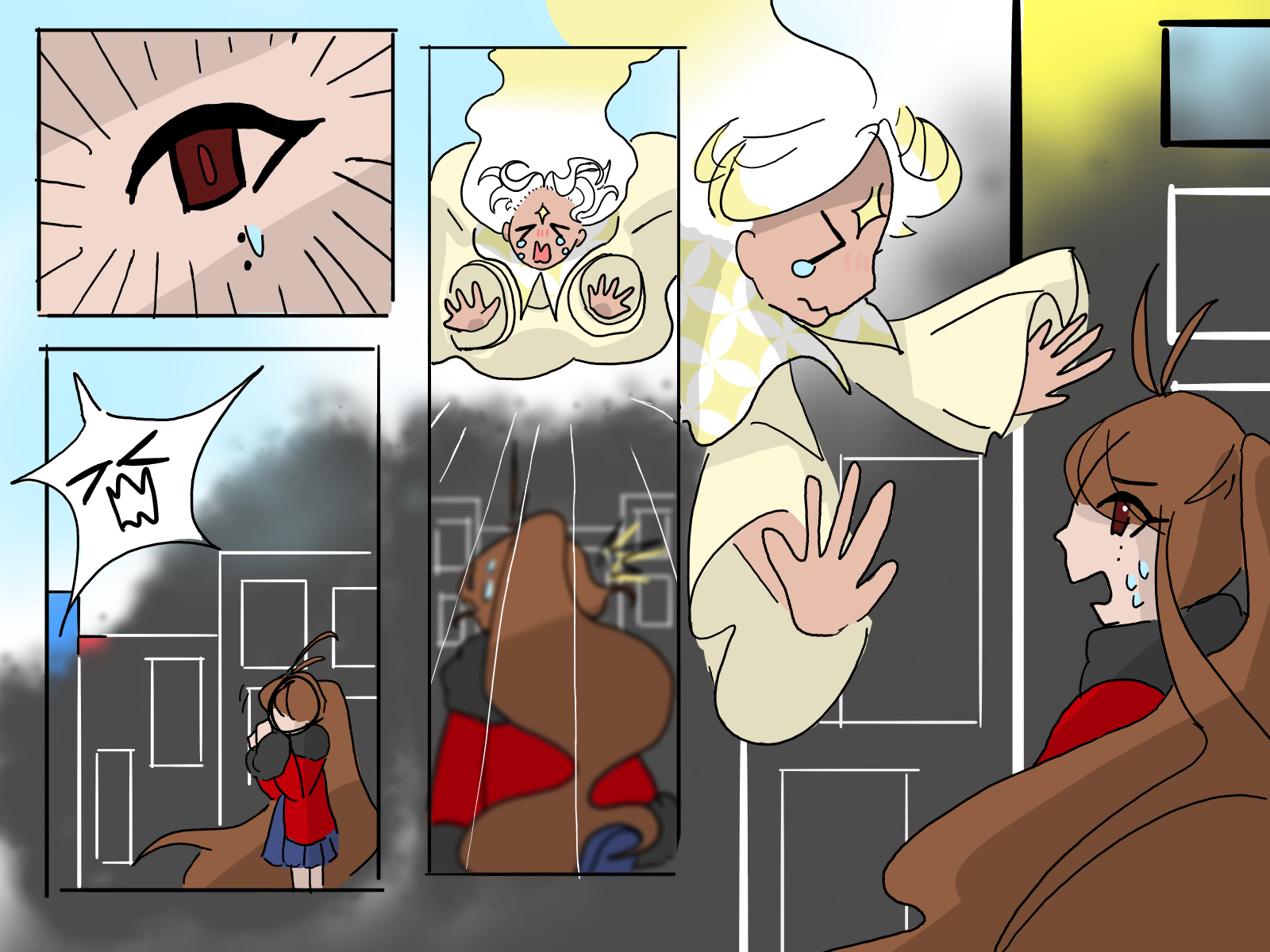
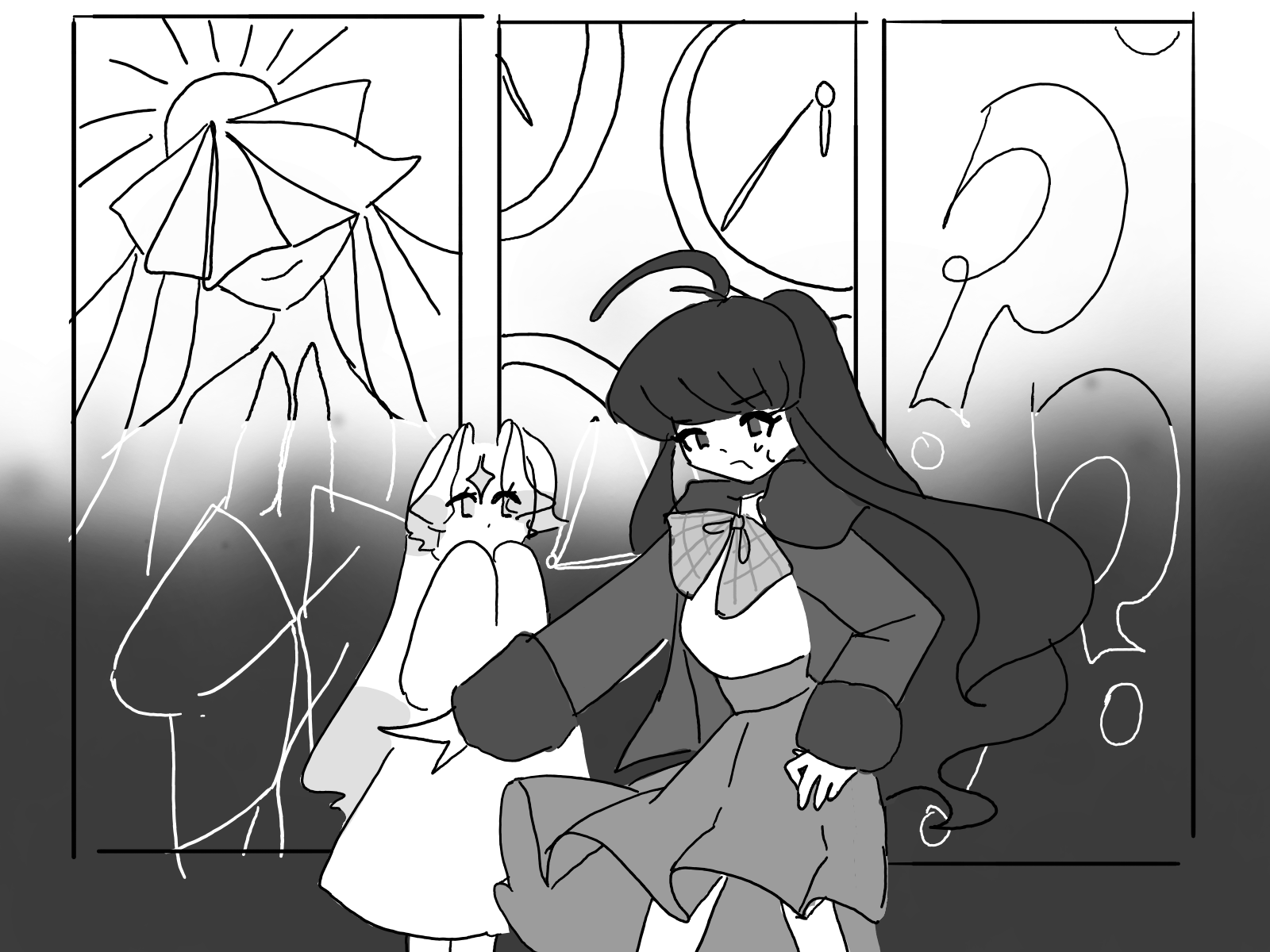
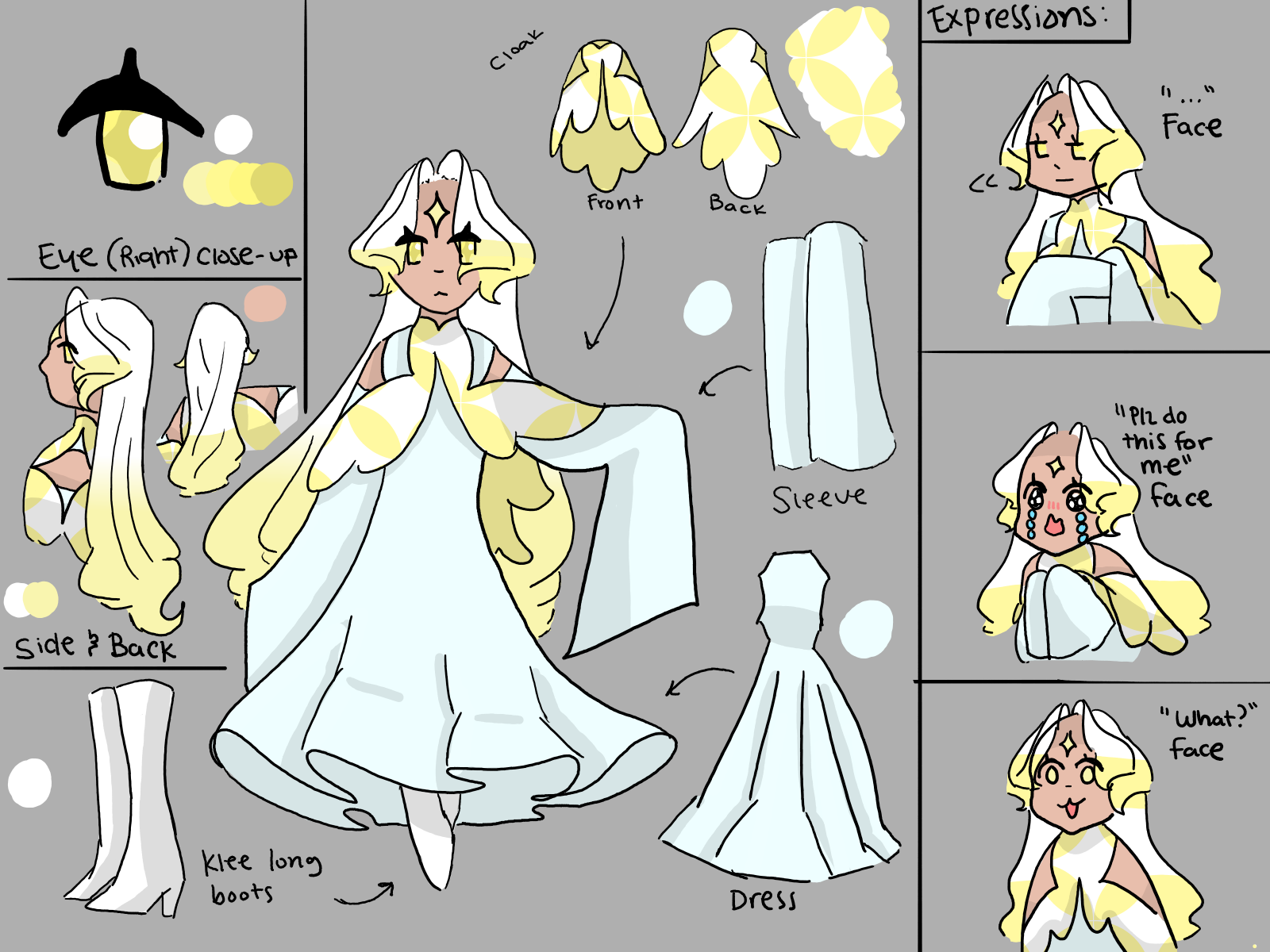
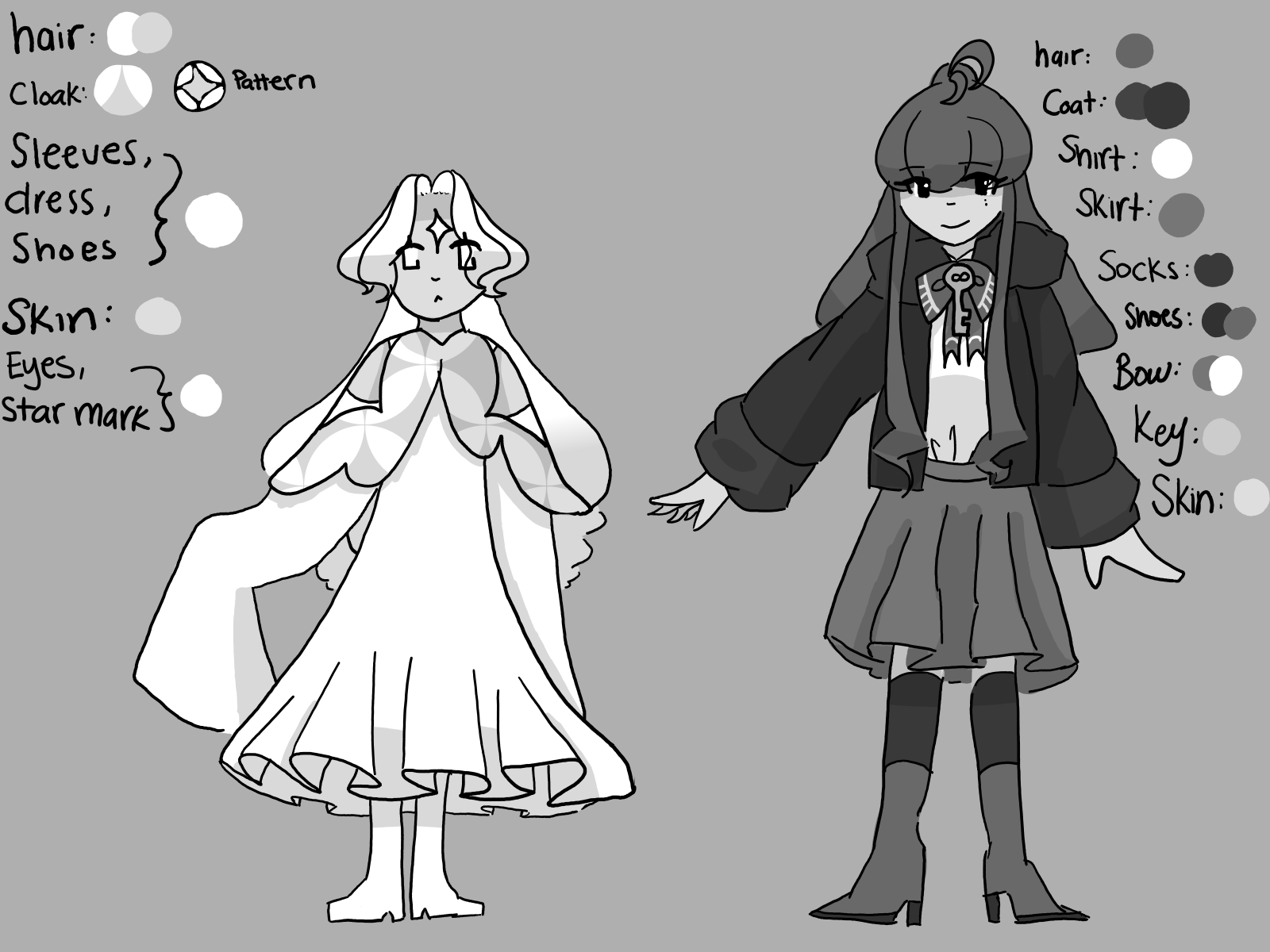
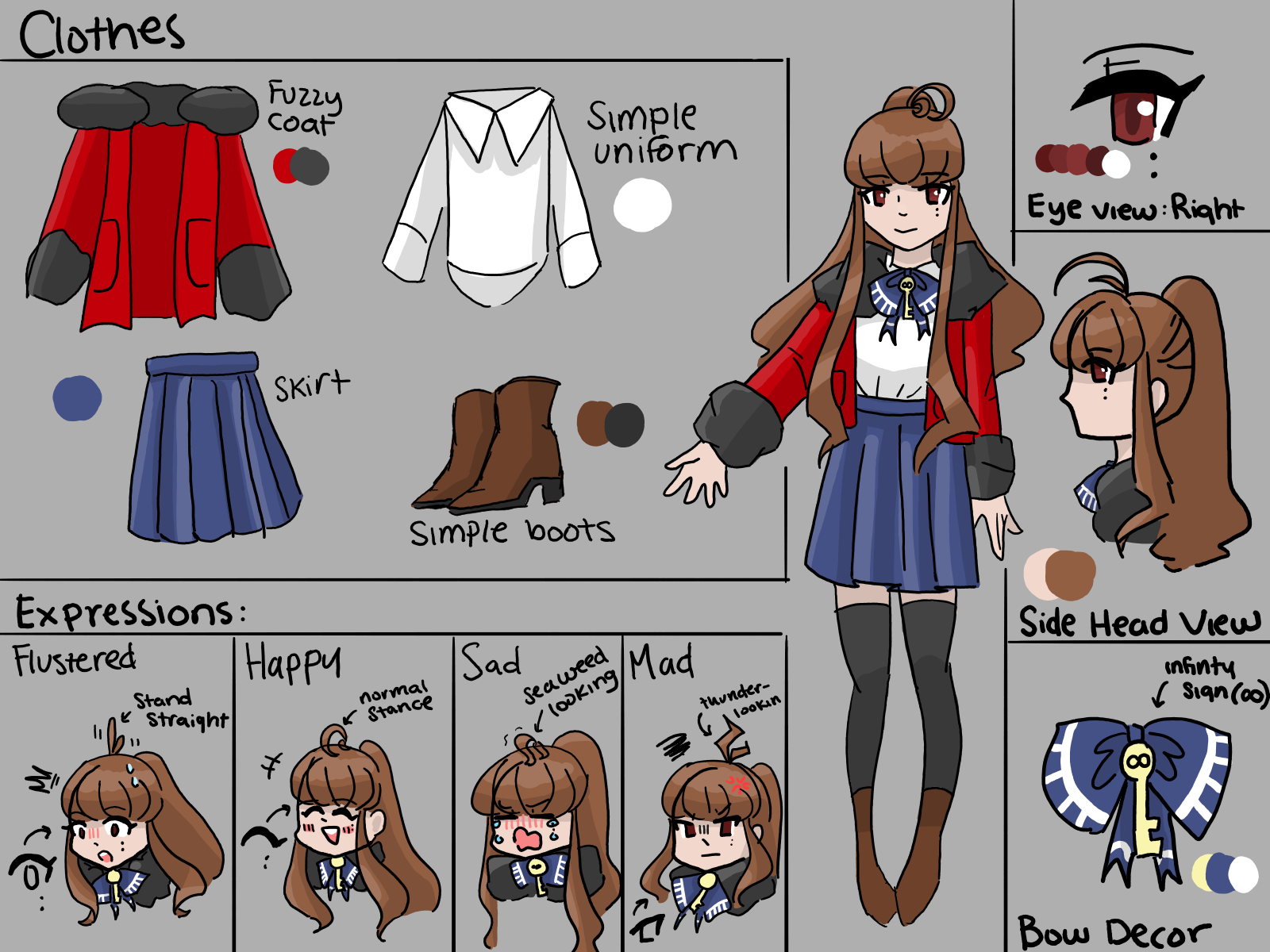
The team approved of the character design and new concept, so we went ahead with it. After changing our game mechanics due to complex game concept, our next step was to address what about time we should talk about. We decided to make a past and future of events in Janus' life. For example, one was about her future aspirations, friendships, and attitude. I made mine on reflecting on old locations, this inspiration came from a cake shop that I always visited in Seattle when I was visiting my grandparents. That had the best smoothies and the cakes the shop made were beautiful. It was two years later when I visited and saw that the shop was replaced. I reflected this memory and the uncertainty of the future as my concept.
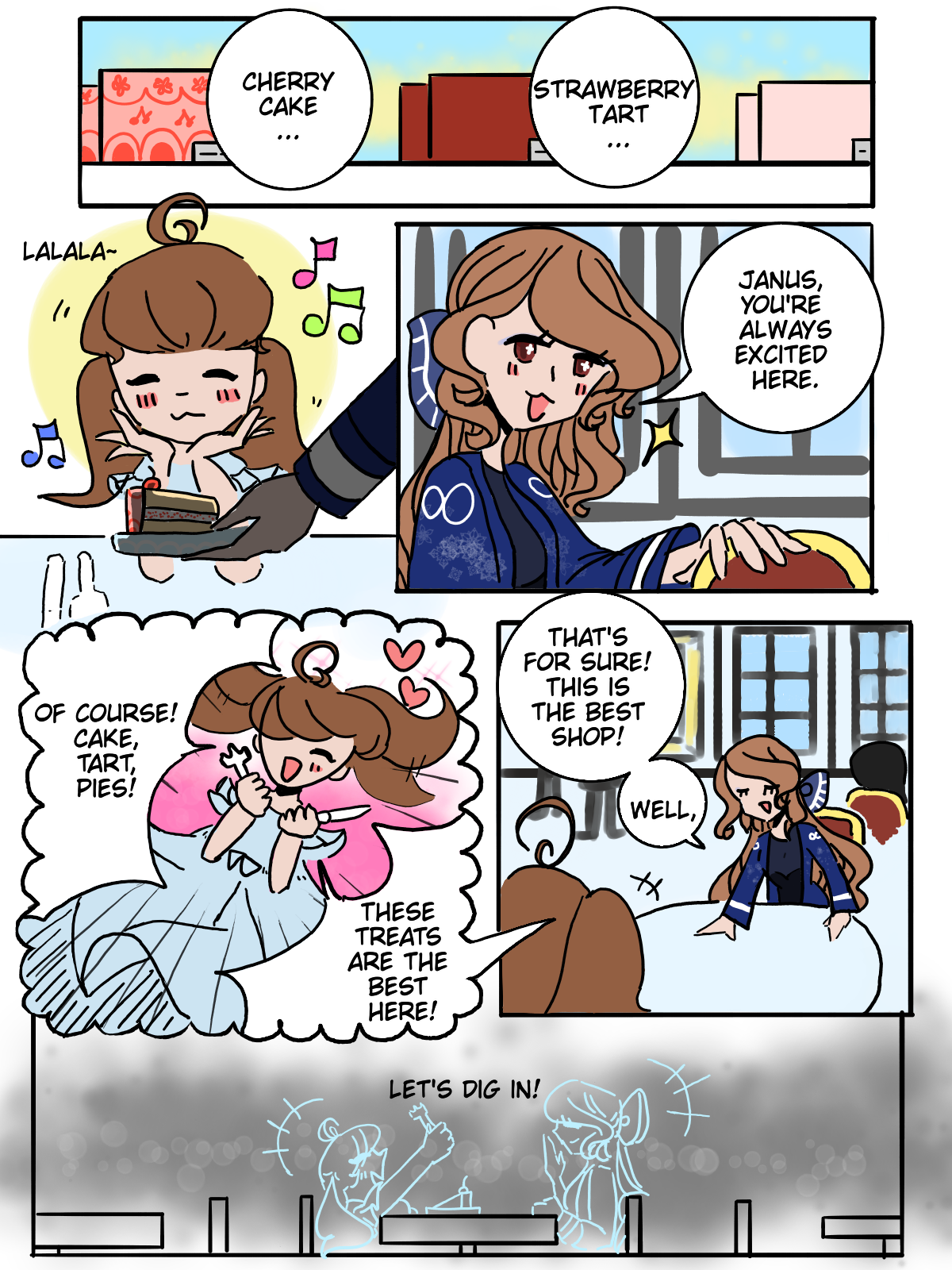
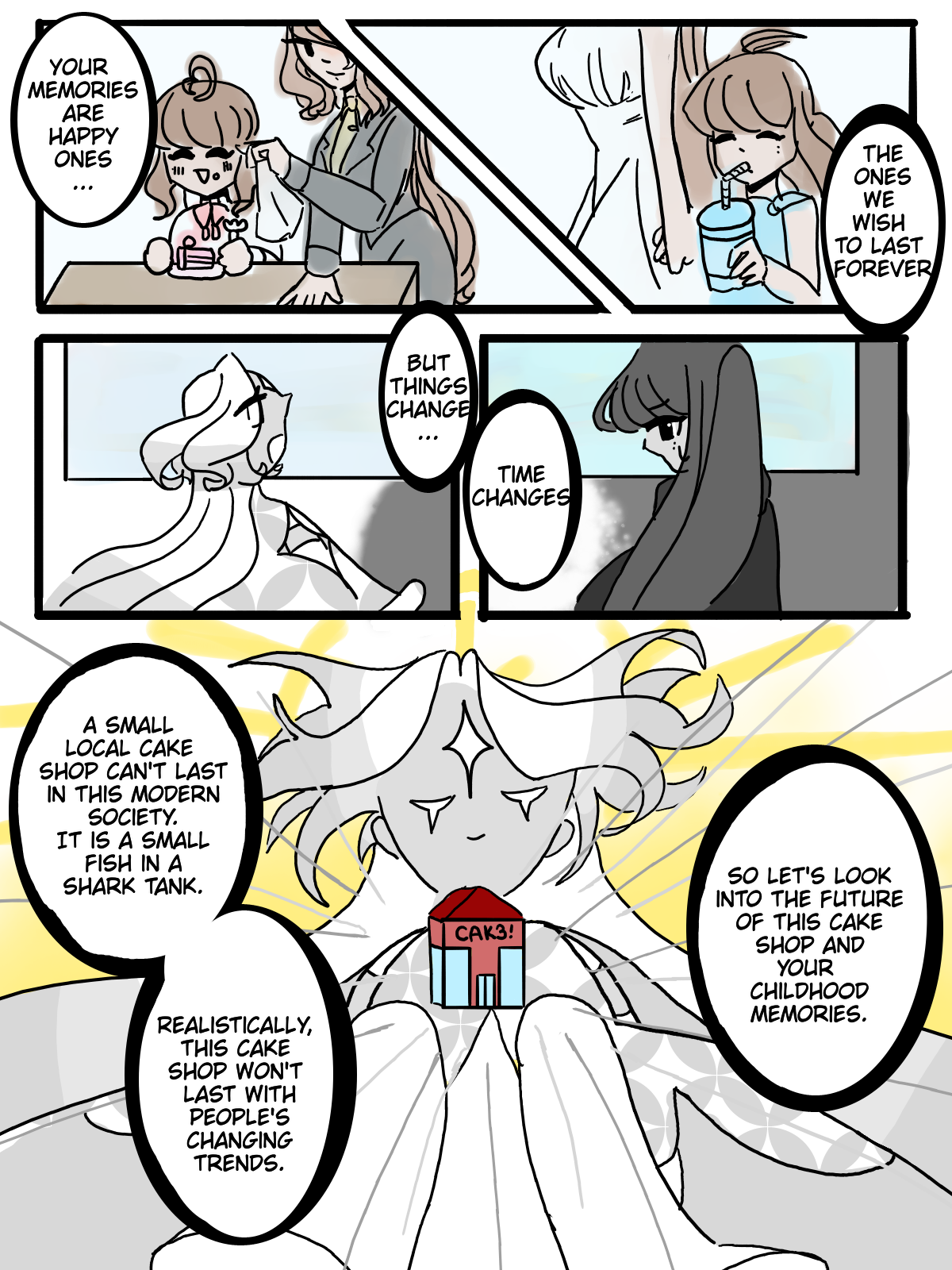
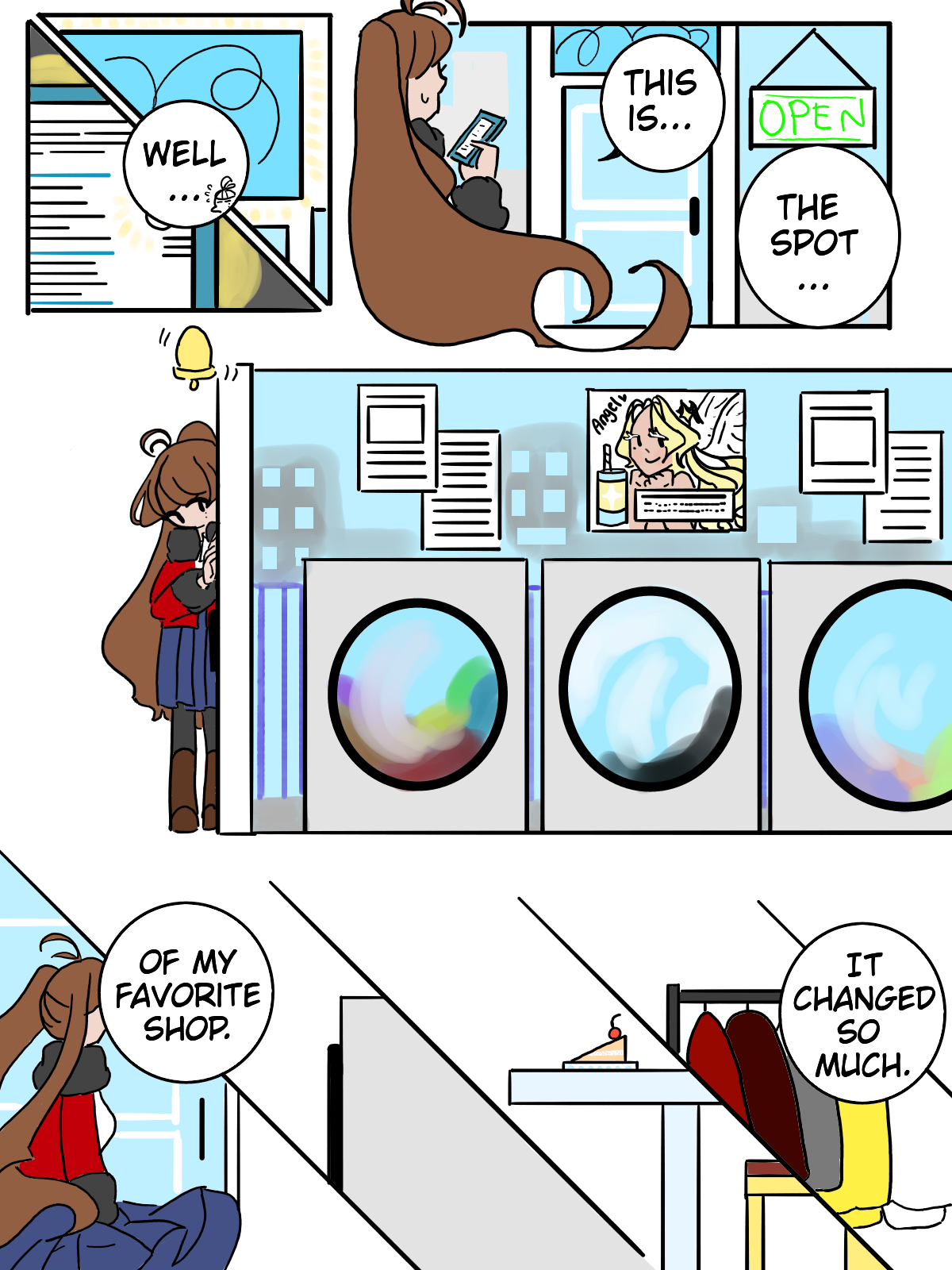
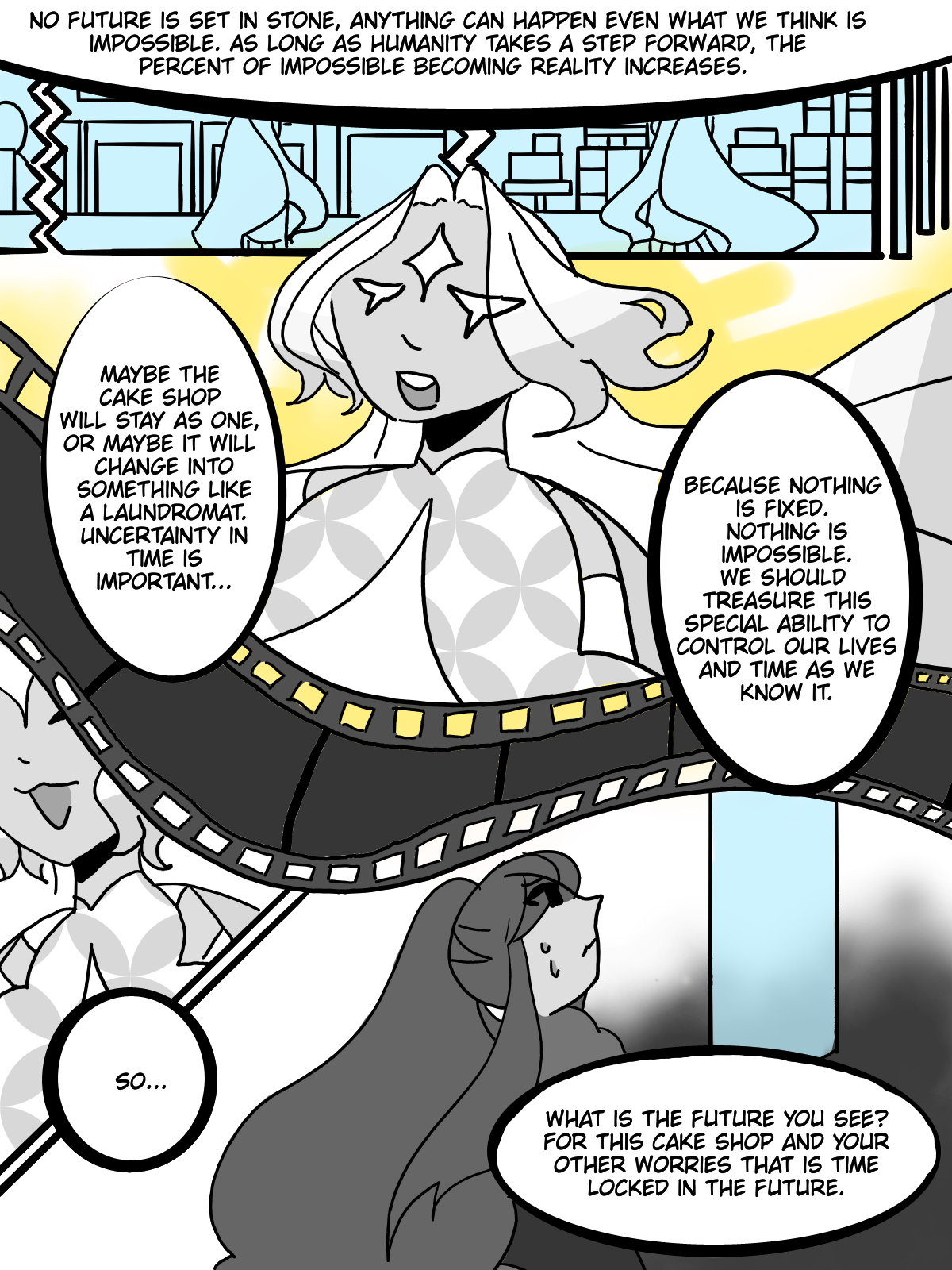
As one of the main artists, I'll admit it took forever to create all these images, and it's nice to see how my art has improved since then. Below is the final art and some in-game screenshots to show some of the experiences a player may encounter.
